
EV Up (2019) and Park N Plug (2020) are two startups I co-founded with the aim of installing and operating electric vehicle charging stations across Australia. I purchased my first EV in late 2018, saw what was happening overseas with EVs and how far behind we are in Australia. I figured I could make a buck while also doing something fun.
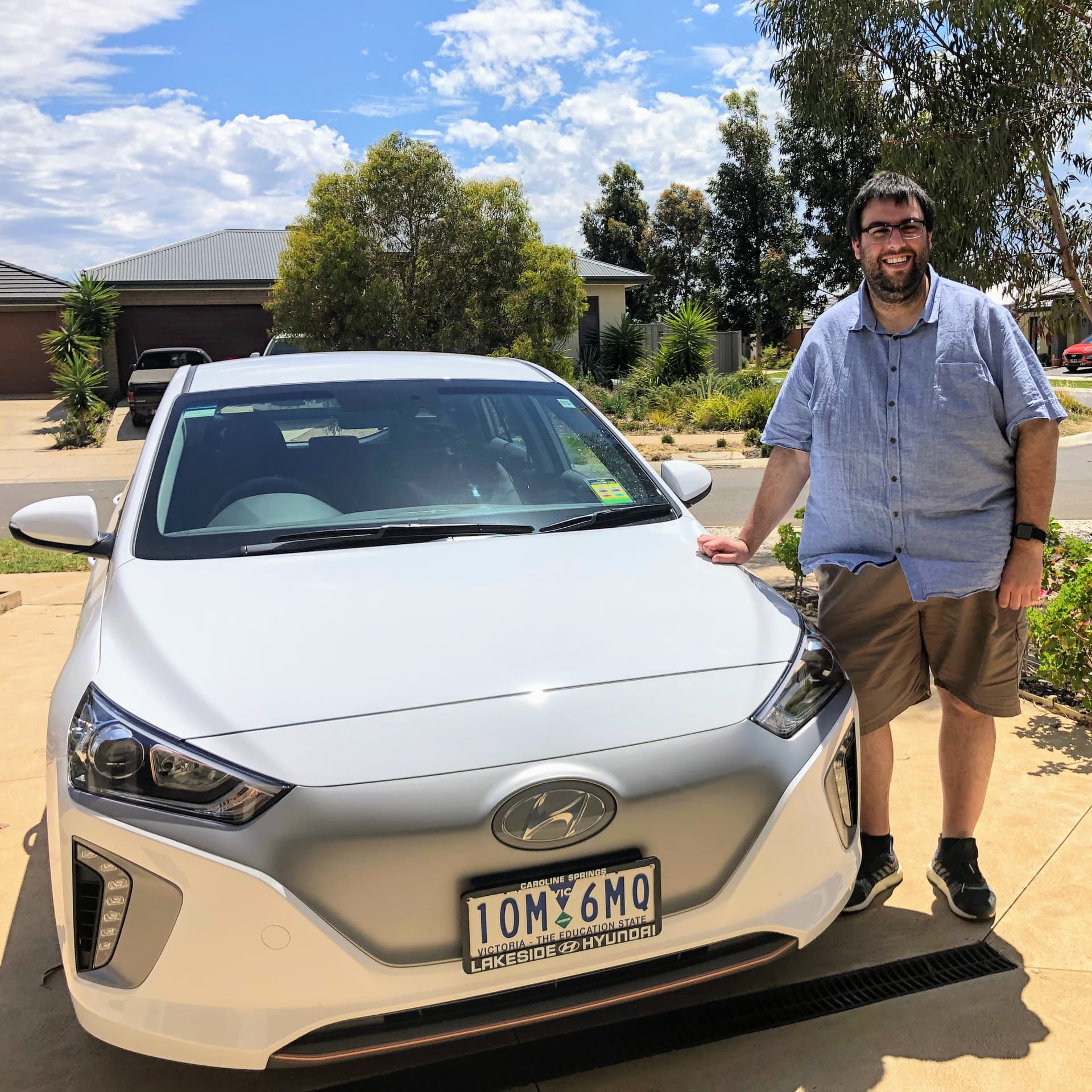 Here's me and my first EV the day I got it home.
Here's me and my first EV the day I got it home.
As of mid-2022 I have demonstrably failed at that task. While EV Up has new management and has installed a few chargers, not a single charger was installed at my time there. I left EV Up after "disagreements" with my co-founders that'll probably get me in legal trouble if I publish them here.
Park N Plug is technically still alive but more like a zombie than anything productive at the moment. It may rise from the dead one day, but as of September 2022, it never installed a single EV charger for the public to use.
These formal pitches to local shopping centres are as close as I got:
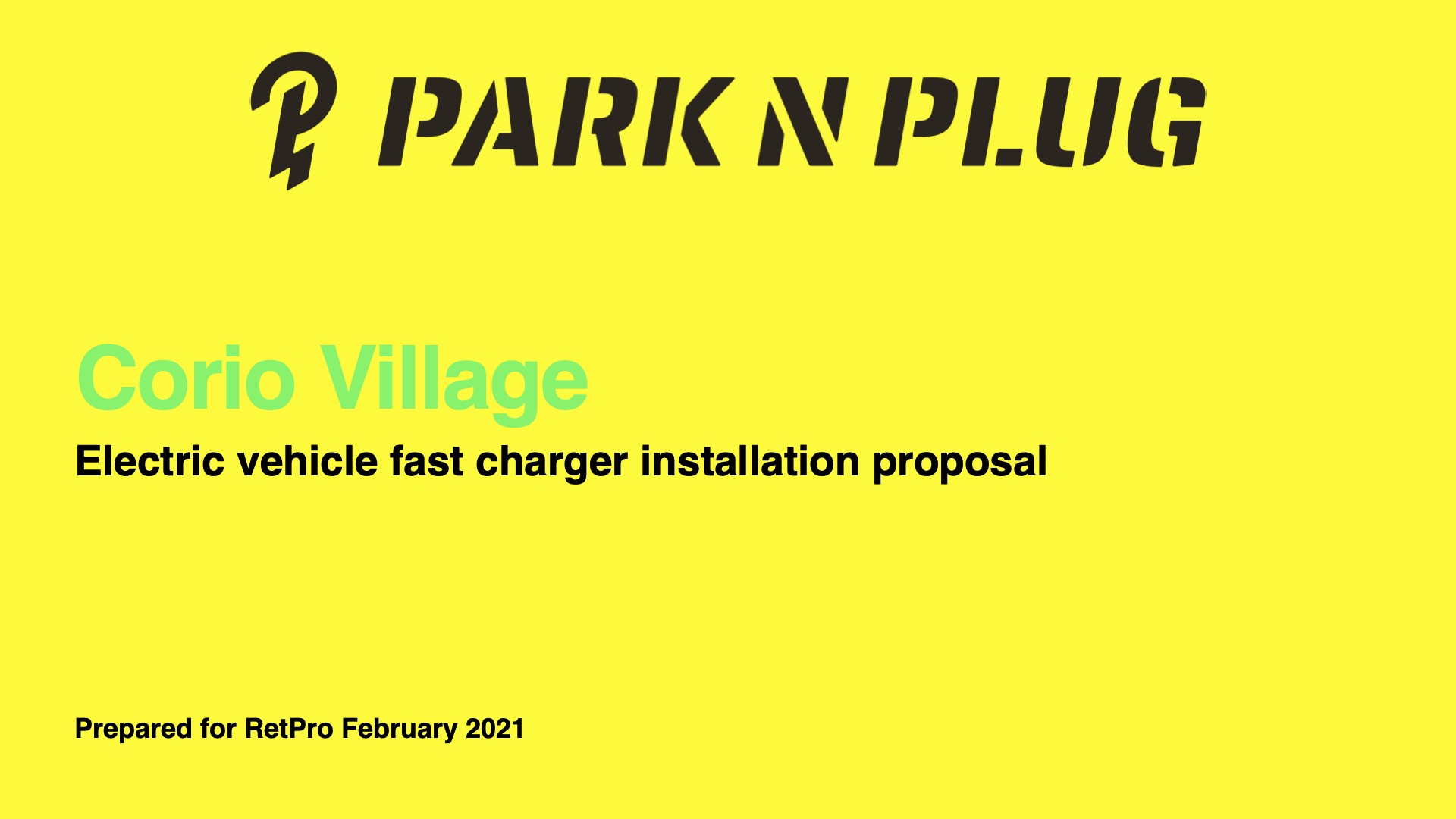 link to full pdf
link to full pdf
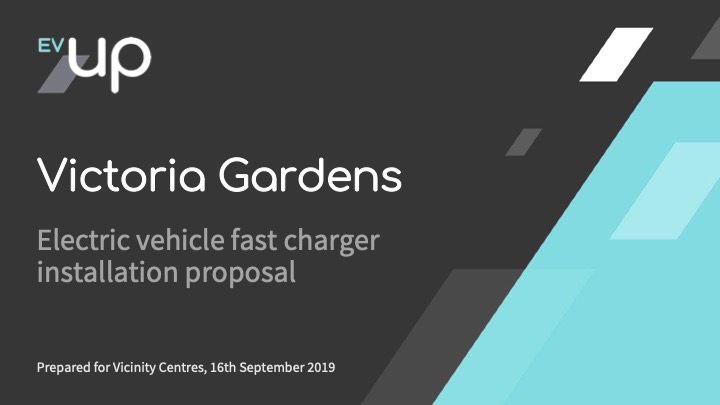 link to full pdf
link to full pdf
The point of this post isn't to analyse why I'm not an EV charging mogul with dozens of stations making mad profits around the country. The point is to dump everything I've learned about this topic into a single place so even if I don't make anything out if, maybe someone else will stumble across it, learn something and do what I couldn't. Even if one extra EV charger gets installed because of this post, it'll be an improvement over my pathetic attempt.
At the end of the day, the root aim with EV charging is to reduce the burden transport has on the environment. Yes, bikes, public transport, walking, etc are better than driving. Yes, manufacturing the car itself and the infrastructure for that car to operate on has an environmental impact. Yes, the particulate matter from the tyres and wheels are awful. But be practical - there's always going to be cars, so we may as well make the cars less shit.
If you've got questions, email me - aagius@fastmail.fm - and I will answer as best as I can. If you need someone to help you work on something related to EV charging, let me know, I'm cheap! If it's cool I might even work for free/equity.
Governments around the world are setting dates for when the sale of new cars burning fossil fuels (aka ICE, internal combustion engines) will be banned:
It's obvious that the status quo (pouring refined oil into a car) is going to be massively disrupted. It won't be overnight and even after these new ICE car sales bans, cars running on petrol will still exist and will likely still be a big chunk of cars on the road. But there's gonna be an even bigger chunk of vehicles that need an alternative fuel source.
Unless you've been living under a rock, it's virtually locked in that electric cars have won the alternative fuel battle for light vehicles (i.e: cars & trucks under 4.5T). As of mid-2022, 19 countries have reached over 5% of new cars being pure electric (aka BEVs, battery electric vehicles) - not hybrid of plug-in hybrid:
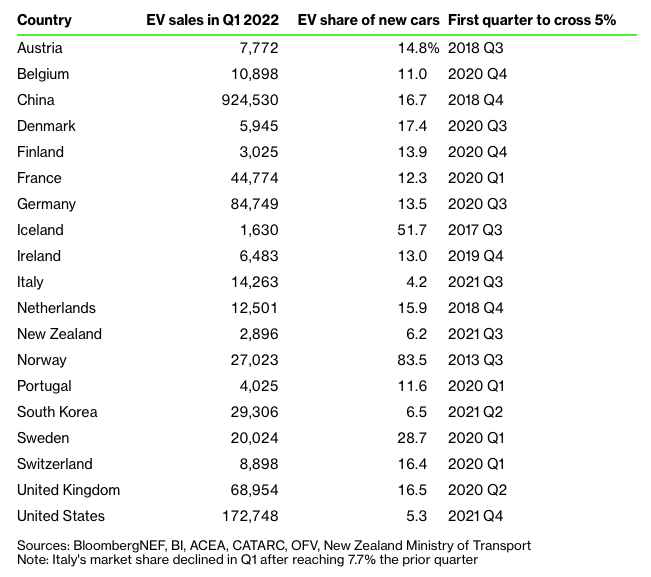
The car industry itself has given up on ICE engine development or hydrogen cars and is going all-in on electric:
That is some serious investment. There's hundreds of billions of dollars going into actual factories and new car development for EVs. Not R&D, not pilot programs. Actual products people can buy and most of it happening in the 3-5 year time frame.
If you aren't convinced that EVs are going to have a huge chunk of the light vehicle market (I'm not talking about trucks or buses here! Very different needs and market) despite all this evidence, then good luck to you. Invest in that hydrogen refuelling station or battery swapping company. The sane people will install EV chargers.
How many EV chargers do we need? Shitloads. Just ask any EV driver. There isn't enough of any type right now. If you want to get scientific about it, there's plenty of research into this. The most recent - Optimizing Public Charging: An Integrated Approach Based on GIS and Multi-Criteria Decision Analysis - was published just last week in the World Electric Vehicle Journal.
It's a German study and their example focussed on the Ruhr region, but it found there's a need for 1 charger for every 9 to 24 registered EVs in that particular geographic area, depending on how strong take up of EVs is in the near term.
The same report cites the EU recommending 10 EVs per charging point. The Chinese aim for 8-15 EVs per charging point. Various US groups looking into this are all over the place with as low as 7 to as high as 24. For an Australian context, lets take the most conservative of those suggestions and go for 25 registered EVs per charging station.
As of mid-2021 (a full year ago now), there was 11,000 EVs registered in Victoria. With sales of the Model 3 and Model Y going nuts this year, I estimate there's at least 20,000 EVs on the road in Victoria. That means we need around 800 chargers if we aim for 25 registered EVs per charger. If we go for 9, we need over 2,200!
A quick look at Plugshare shows that in Victoria only has around 375 chargers on the map. A decent number of those may not even be practically useful by the public.
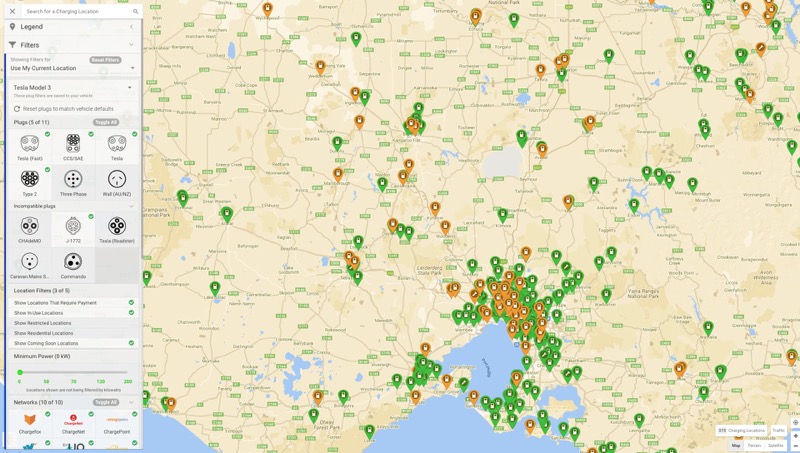
Regardless of how you slice it, there is huge demand for EV charging. Governments are mandating the change from ICE to zero emissions transport, car makers are throwing all their resources into battery electrics and the charger market is severely under utilised now let alone in the future as more EVs are sold in Australia.
Here's a crash course in electrical basics:
Actual engineers or electricians are probably cringing, but like I said, it's a crash course! Knowing this stuff now will help make sense of the rest of this post. Schneider have an excellent wiki explaining everything related to the electrical side of EV charging and other electrical basics. I strongly suggest reading at least the EV section.
EV chargers (or EVSE, electric vehicle supply equipment if you want to get fancy) come in two basic types - AC and DC units.
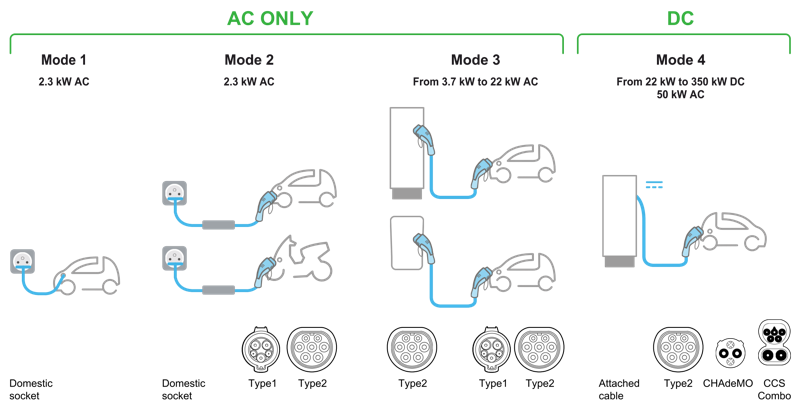
This video does a good job of explaining how an AC charger works:
Here's some common AC chargers in the wild:
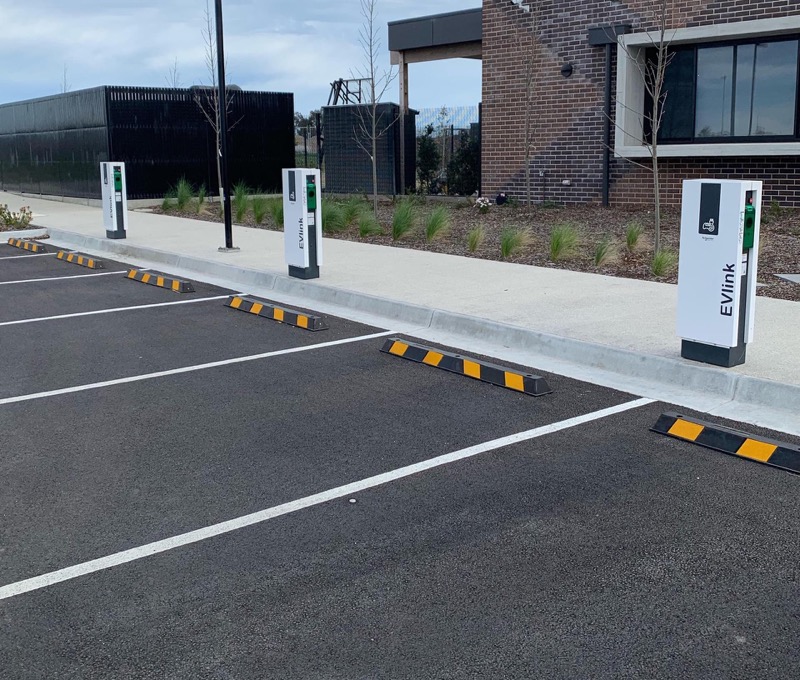
↑ A couple of Schneider units in Armstrong Creek. By far the most common AC units I've seen. These have two sockets on em and can be maxed out at 22kW per socket. BYO cable required. I don't know how this particular site is wired up, but it could be as simple as a single 32A 3-phase circuit that all three chargers share. They can be configured to share the load so if one car is charging, it gets the full 32A. If a second car comes, each gets 16A. If a 3rd arrives 10A each and so on.
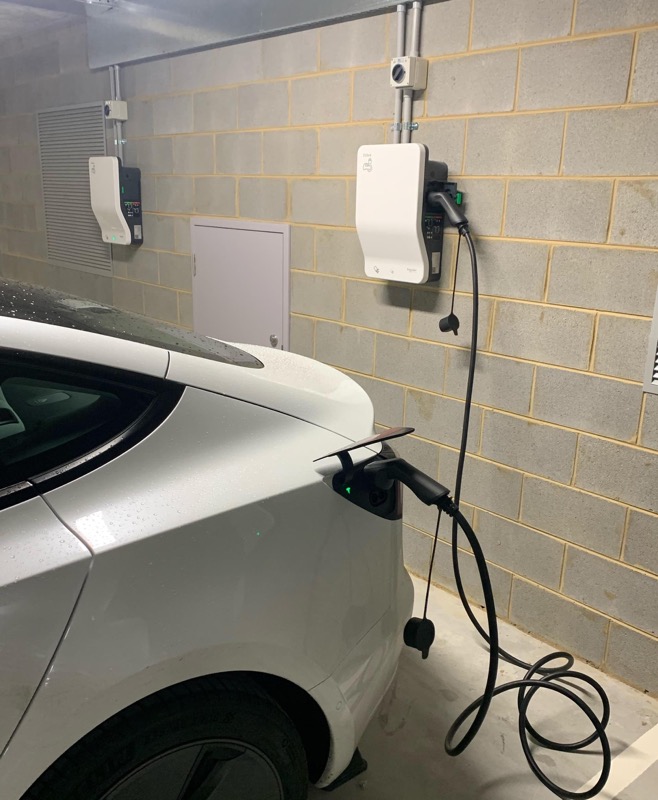
↑ These are also Schneider units, but wall mount instead of floor mounted. Bit easier to install.
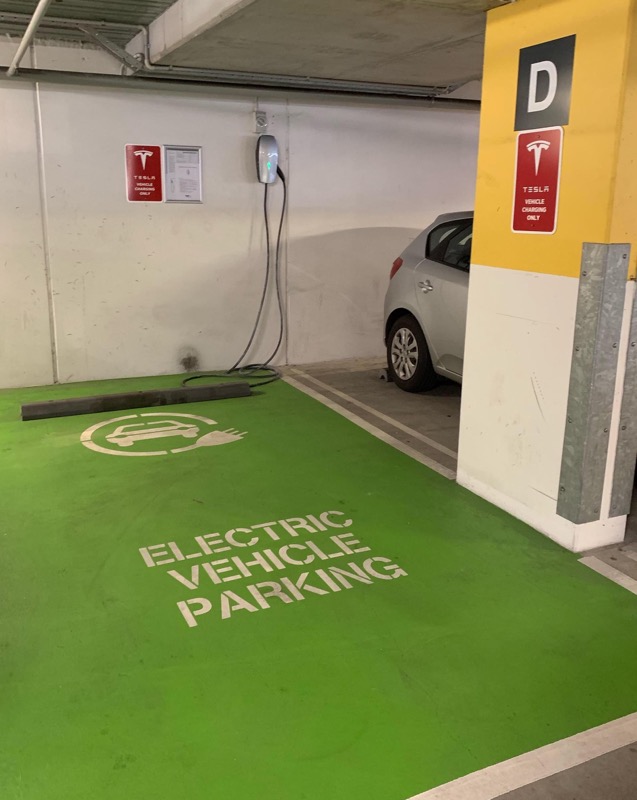
↑ A Tesla destination charger at Docklands I think. It's got a cable already, no need to BYO. Sometimes these are configured to work with non-Teslas, sometimes they are not. Up to the place that installed them to flick a switch in the unit (or log-in to the unit's control interface and tick the box) to decide.
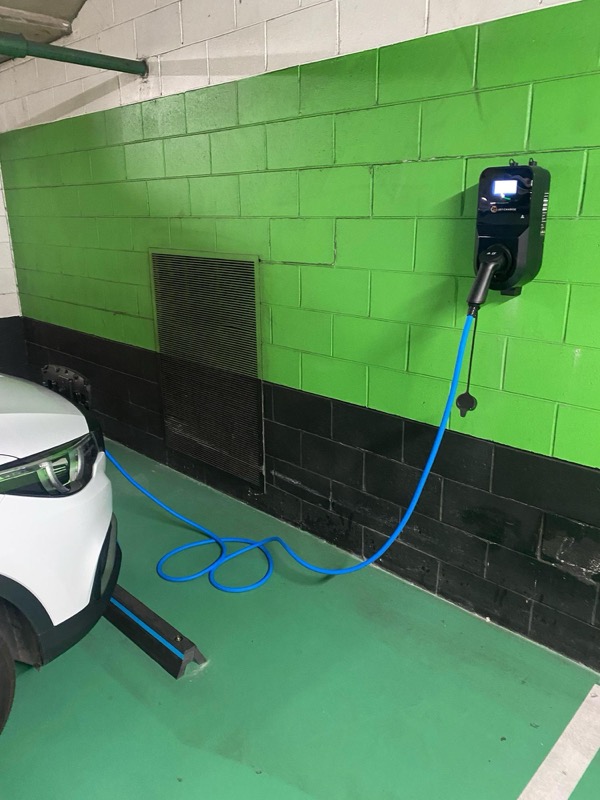
↑ Jetcharge, probably the largest EV charger installation business in the country, has started making their own EV chargers. Dunno why they didn't like the other products on the market, but whatever. They're becoming more and more popular just due to the fact they're the biggest in the country and they recommend their own unit over others.
Here's photos of some common DC chargers you'll see in Australia:
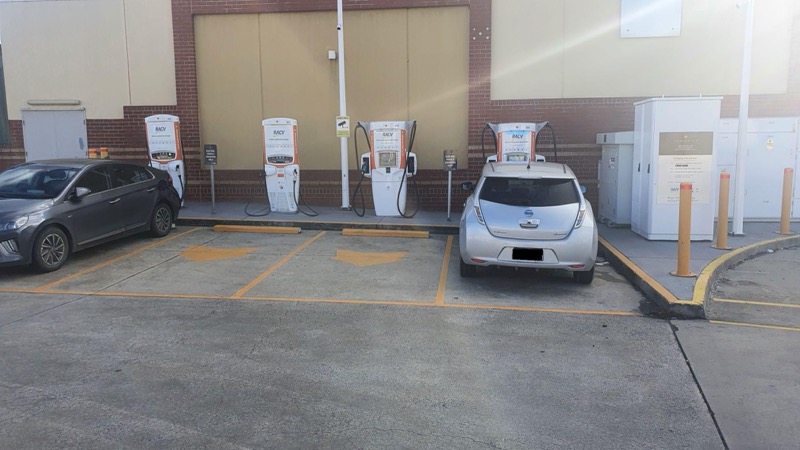
↑ This is a Chargefox site in Ballarat. On the right are 2x 50kW units. On the left are 2x "350kW" units. On the right of that is a transformer (the smaller box against the wall) that takes the high voltage power direct from the transmission lines/substation and turns it into 400V/800V. That's connected to the switchboard on the right. That box with the sign on it are the rectifiers (connected to the switchboard) for the 350kW units. The chargers are wired directly to that box via DC cabling. The 50kW units have their own built-in rectifiers.
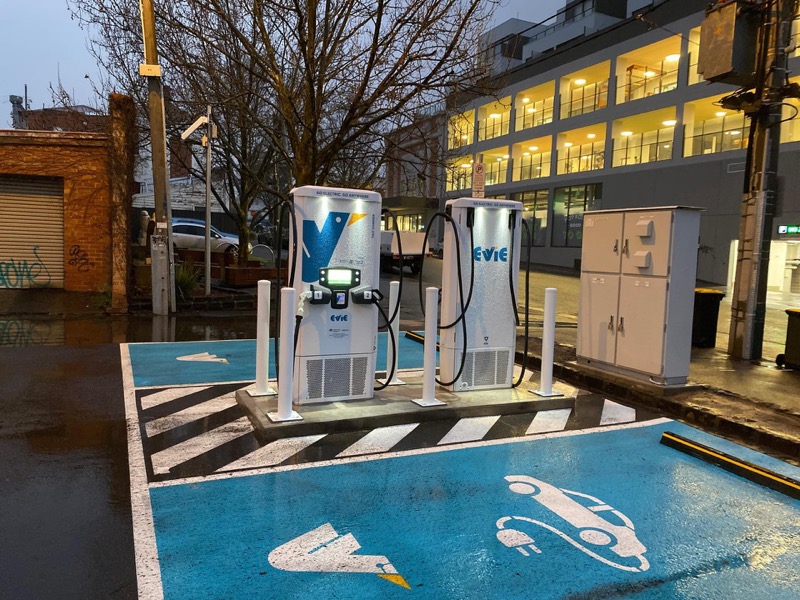
↑ Here's an Evie site in Ascot Vale. There's two Tritium chargers here that have their own built-in rectifiers. I think they're configured for 70kW each, but can be upgraded by adding additional rectifier modules like the chargers above in Ballarat. That big grey box with 4 doors on it near the power pole is the switchboard and meter for the two chargers. There's no need for a transformer as these chargers are not as powerful as the ones in Ballarat and the supply feed is already at the 400-415V these chargers need.

↑ This is a Delta 25kW unit in Cobblebank. See how much smaller it is? Even though it hasn't got much more power than a 22kW AC unit, because it's a DC charger it can bypass the built-in rectifier in the car and charge at 25kW instead of 11kW or 7kW over AC power. Because it's small it can also be mounted on a wall if you want to save on install costs.
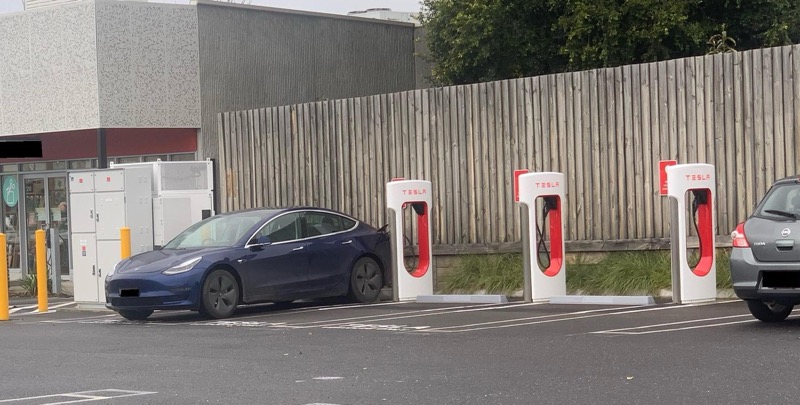
↑ Tesla Superchargers in Colac. I can't see a transformer (this shopping centre probably has a chunky supply feed already), but you can see the switchboard and a rectifier behind it that the Supercharger "heads" are connected to via DC cabling. Like the Tritiums in Ballarat, the rectifiers are shared between all the charging heads rather than each one having their own like the units in Ascot Vale.
In Australia we use Type 2 for AC charging (sometimes called Mennekes, or IEC 62196-2) and CCS2 for DC charging. They're also the same in Europe. They look like this:
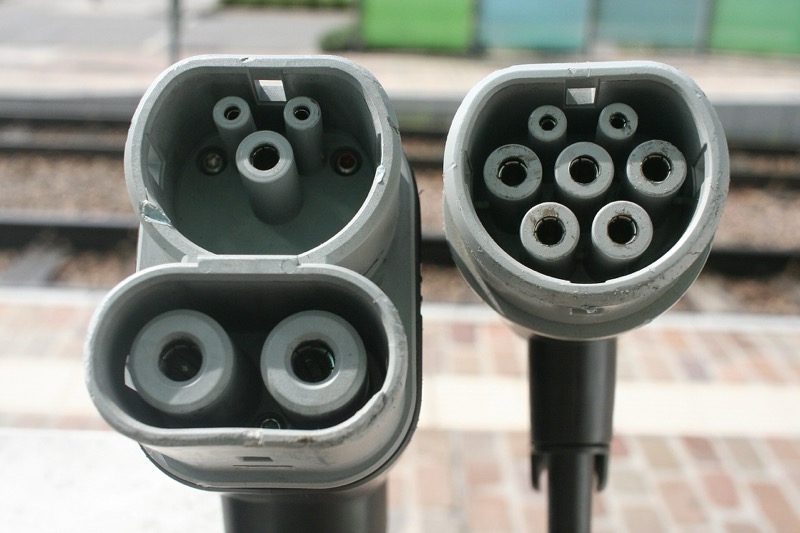
America, South Korea & Japan use Type 1 for AC (also called J1772) and CCS1 (USA) or CHAdeMO (Japan) for DC charging. They look like this:
 AC Type 1/J1772 plug
AC Type 1/J1772 plug
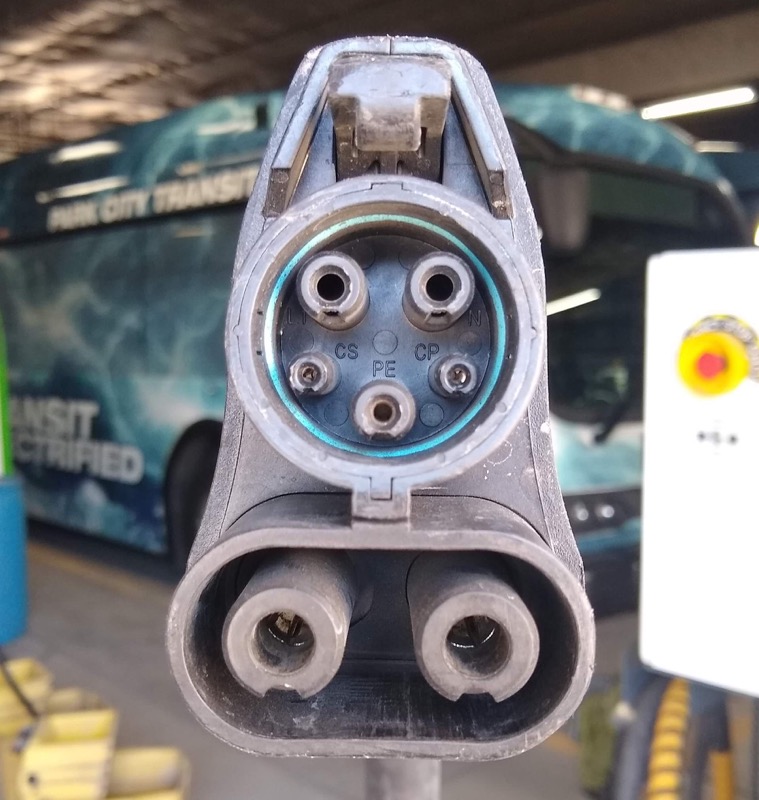 DC CCS1 plug
DC CCS1 plug
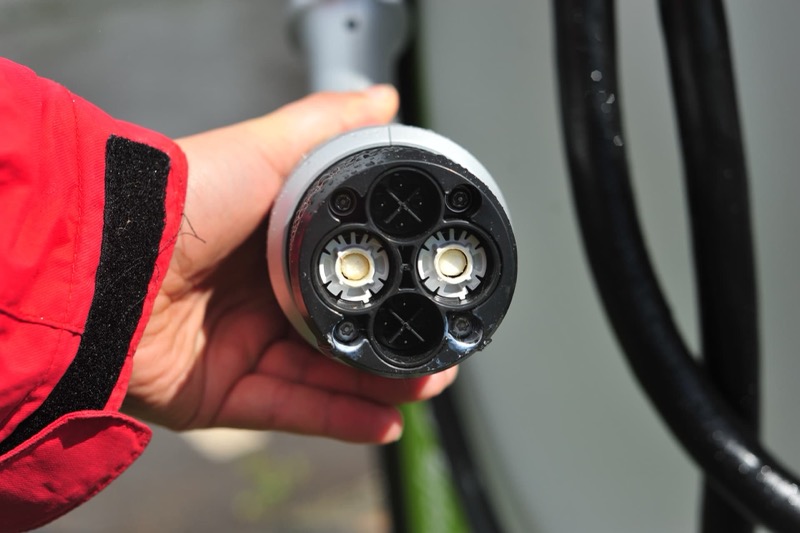 DC CHAdeMO plug
DC CHAdeMO plug
You'd think this is a simple question, but it depends on so many factors and is actually a pain for most people to work out.
Using the Tesla Model 3 Standard Range (the most common EV in Australia) as an example:
AC charging is capped at 11kW. If you're plugged in to a 22kW charger it'll charge at a max of 11kW. If plugged in to a 7kW charger, it'll charge at 7kW. The power output won't change throughout the charging session as this power level isn't enough to impact the battery. The Model 3 SR+ uses 132Wh per kilometre, so if plugged in at 7kW for 90 minutes, you've added 10.5kW of power to the battery. That 10,500W will add 79km of range (10,500W divided by 132 Watt hours). The battery can hold up to 57.5kWh of power, so if you want to go from 10% to 100%, you'll need roughly 52kWh of electricity. At 7kw, that's 7.5 hours of charging.
Inside EVs has a solid article with details about DC charging. While it can top out at whopping 159kW, it depends on the battery's state of charge. See this chart for how it declines the more full the battery is:
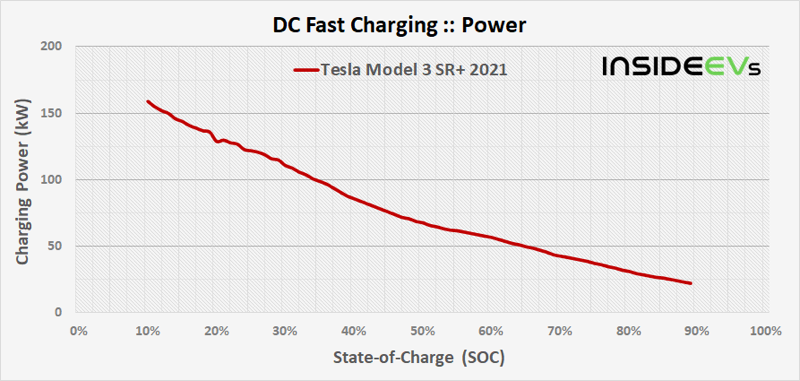
This chart shows how long it takes to fill the battery to different percentages:
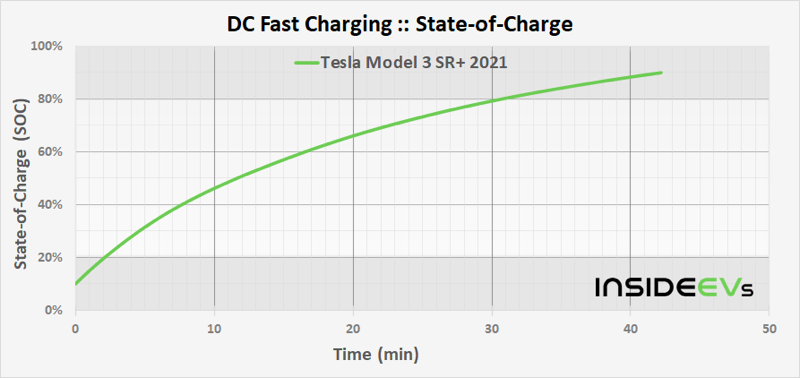
Starting at 20% and want to get to 80%? That's gonna be about 25-30 minutes.
Complicated, right?! This is just the Tesla Model 3 - a Hyundai Ioniq 5 or a BYD Atto 3 will be different due to how the battery pack and charging management system in the car is configured. I wish it was easier but that's just the nature of how electricity and batteries work.
This diagram from Schneider uses an EV with a 40kWh battery (i.e: Nissan LEAF) as an example:

Depends where you charge it! Using a Tesla Model 3 Standard Range (13.2kWh/100km) this is how much you will pay to move 100km at the nearest chargers to my house.
As you can see, pricing varies based on location and type of charger. Personally I think 30-40c/kWh for AC charging and 60c/kWh+ for DC charging is fair. This infrastructure isn't cheap. To compare, the same 100km with a Toyota Camry Hybrid (4.7L/100km) will set you back $9.40 for 4.7L of 95RON petrol @ $2/L, so even at 60c/kWh I'm saving money versus petrol.
Apple & Google Maps - not sure where they pull info from. I assume they scrape the popular apps and other databases with generous licences.
In-car navigation - typically provided by TomTom, you can submit charging stations to them!
Open Charge Map/Open Street Map - because the data can be freely used by anyone, many charger databases/apps/maps simply suck in data from these sources (like ABRP), so it's a good idea to add your charger there too.
Tesla navigation - disappointingly only shows Tesla chargers, so a decent amount of Tesla owners don't even know non-Tesla chargers exist!
PlugShare - by far the most comprehensive database of EV charging stations in Australia. I wrote an article about PlugShare and ABRP (an app to plan EV journeys).
Charging network provider apps - Evie & Chargefox have their own apps. I don't use them to find chargers, but I'm sure some people do.
Want to collect money for using the charger? You need some sort of management software, or CSMS. There's a protocol called Open Charge Point Protocol that's responsible for a lot of this stuff and comes in two versions - OCPP 2.0 and OCPP 1.6. Every single "smart" charger supports OCPP 1.6, despite OCPP 2.0 being newer. I'm not sure why OCPP 2.0 support is so rare.
Of course, all the chargers need some sort of internet connection to make this all happen. You can use wi-fi or ethernet, but if they're out in the public you're probably going to be using 4G/5G. The chargers can be purchased with built-in LTE modems. Chuck in a SIM card and off you go. There's plenty of businesses that'll help you out with "fleet management" of SIM cards and pooled/shared data plans. Google M2M (machine to machine) SIMs.
Some popular CSMS platforms:
There's shitloads more, all of various qualities, these are just the ones I remember off the top of my head. I used to have a spreadsheet with all the costs of these platforms as part of my investigations for Park N Plug but I lost it. This sucks as it was really annoying to sit through all these sales pitches when all I wanted was the damn price and a 24-hour login to see what the platform is like. However, I can tell you that the prices are often a combination of:
As you can see, a CSMS can get very expensive very quickly and gets worse if you scale up (i.e: lots of AC chargers). At Park N Plug we decided to build our own as it would be cheaper in the long run. One developer made a basic, but fine for our needs CSMS in a few weeks and did a great job. It helps that my co-founder runs a software development business and I'm a huge nerd, so this kinda thing is our wheelhouse. A property business or an electrical infrastructure company probably doesn't have these skills in-house.
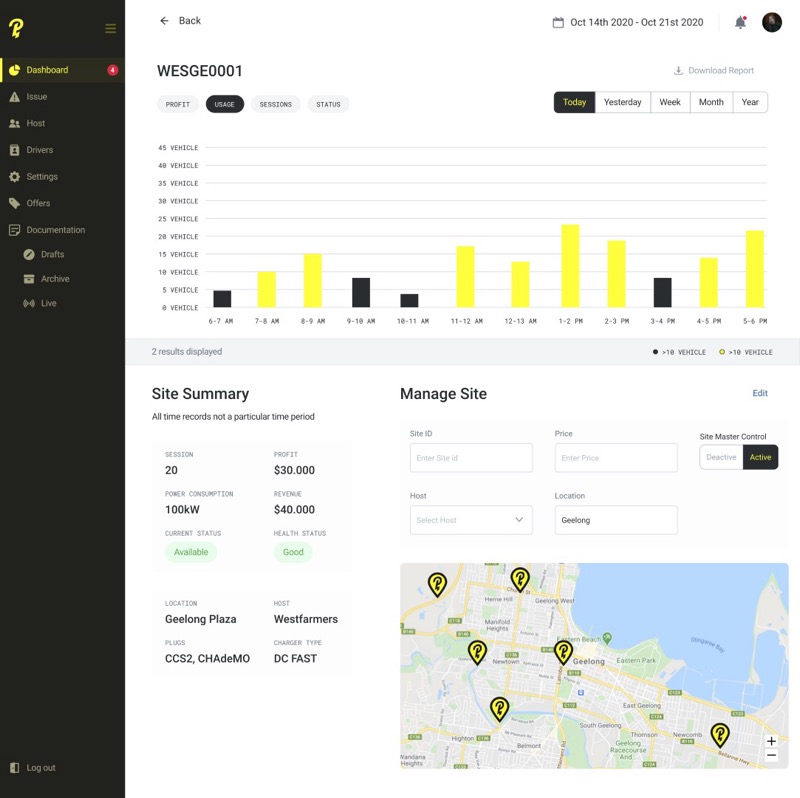 An early mockup of Park N Plug's CSMS. Yeah I know it's rough. The screenshot is just here for some colour.
An early mockup of Park N Plug's CSMS. Yeah I know it's rough. The screenshot is just here for some colour.
For managing the chargers (aka the backend) you get a dashboard with a list of your units in the field, their health status, set prices for power, view stats on their use, see if they're in use, etc. The actual configuration of the chargers typically happens via an embedded computer on the charger itself (like a web interface for a router for example) where you can set power limits and tell the charger where the OCPP endpoint is for billing and other stuff. The backend also lets you view customer details, like their username/password resets, billing/card info, power supplied, coupons, etc. if you might also want to give read-only access to the owner of the charger or the property where it's installed so they can get reports on usage and income.
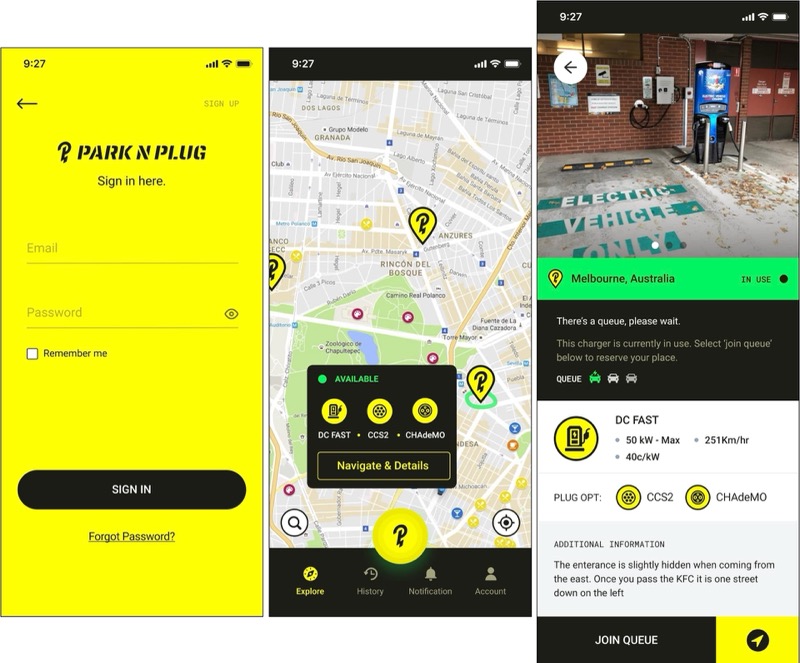 The driver side/front end of Park N Plug's CSMS.
The driver side/front end of Park N Plug's CSMS.
There needs to be some sort of interface for the drivers - aka a "front end". They sign up and add their card details from this front end, as well as start charging, view the charging session and then stop charging. They also want to see a map of chargers, see if the charger is online before they arrive, if it's in use, how much it costs and so on. This can be an app or a website. There's a couple in Australia already that'll I go into more detail with in a future post. This video from Chargepoint is a good example of the driver app in action:
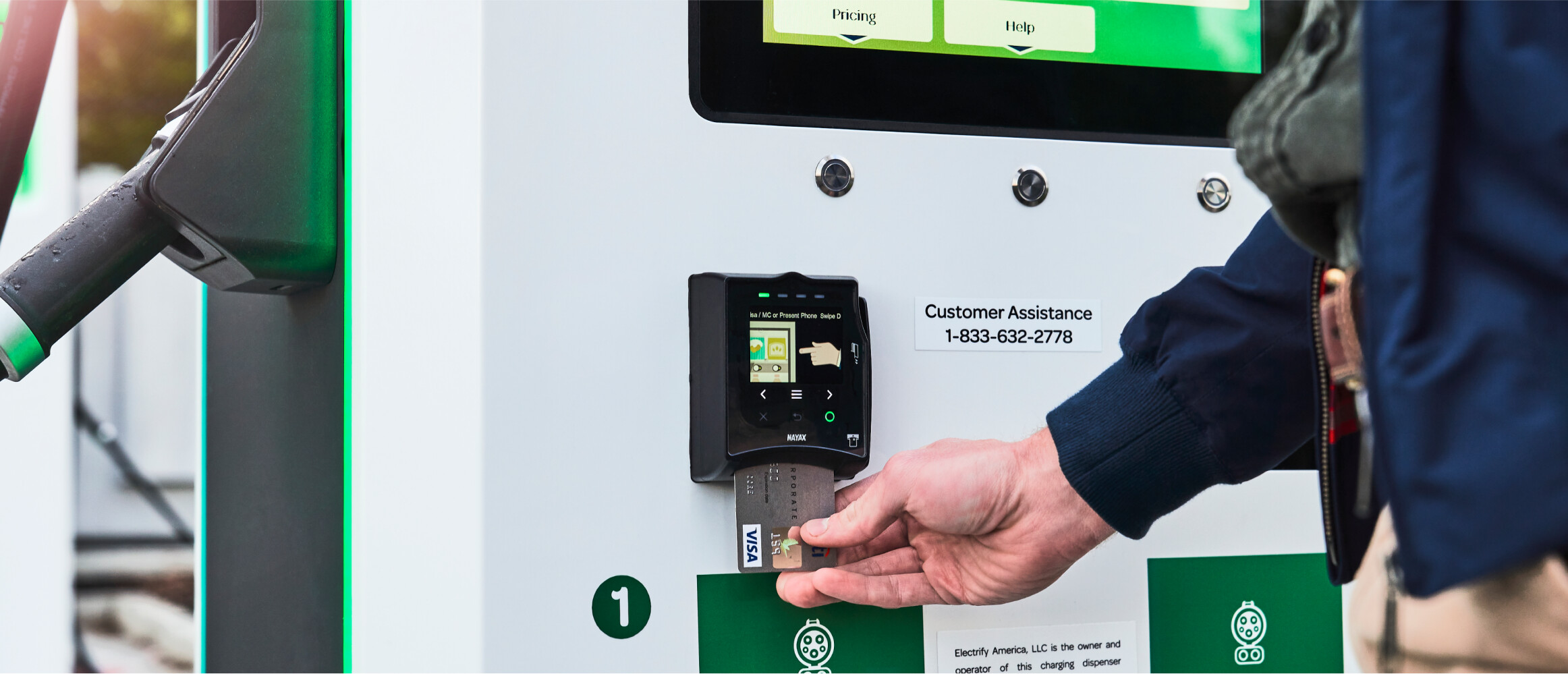 A Nayax card unit on an Electrify America charger.
A Nayax card unit on an Electrify America charger.
You'd think it would be easy just to slap a Paywave or some other contactless payment system on the front of the charger for billing. No need for apps or RFID tokens, just plug in your car, tap the card, press start and off you go. I'm not 100% sure why, but nobody in Australia is really doing this.
Instavolt in the UK have managed to make it work. Look how easy it is:
Now compare it to an Ecotricity charger with an app (which is similar to how most other EV charging networks operate):
California made it mandatory for EV charging stations to accept cards on new stations as of the 1st of Jan 2022 - so I expect to see more innovation in this space soon.
Tesla make it super easy to use a Supercharger. Your car and credit card are linked via your Tesla account, so when you plug in to a Supercharger it knows who you are and starts charging immediately, billing your card when its done.
If I was starting a charging network in Australia, I would work very hard to make sure there's a way someone can use and pay for the charger without registering/making an account. It's what Tesla owners are used to, it's how most people expect it to work and personally as a customer, it's just easier overall.
Apple's App Clips and Android's Google Play Instant look like solutions that are easier to implement than a credit card terminal inside the charger. People can scan the code with their phone, a mini-app is launched and they can use Apple Pay/Google Pay to start the charging session. This isn't an app development tutorial, so if you want to learn more hit up old mate Google or ask your local nerd.
A popular (particularly overseas) way to activate an EV charger is via RFID card. Just tap it on the front of the charger and your linked account is billed for the session. Kinda like a credit card you can only use at that charging network's chargers.
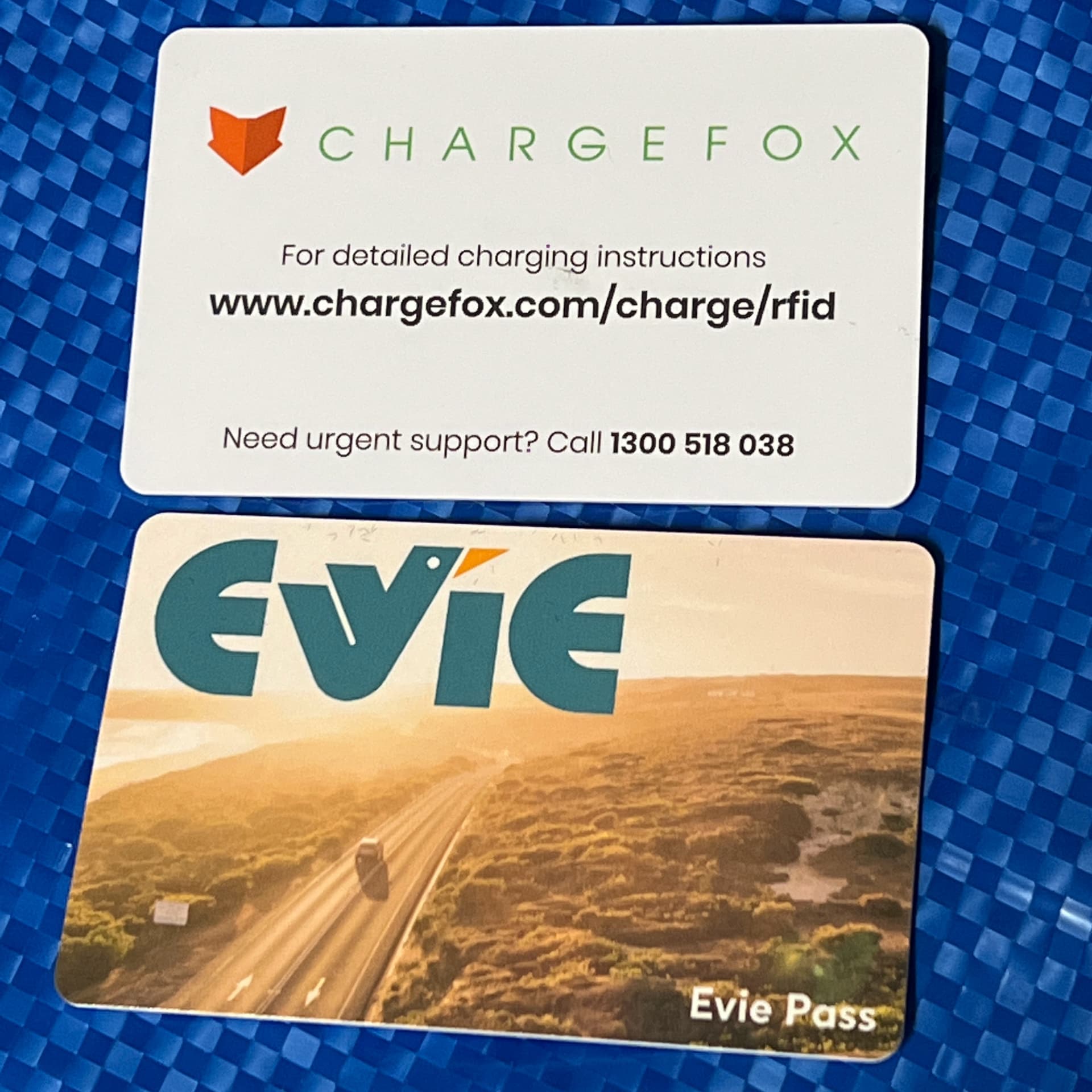
I personally find it faster and more reliable than using an app, but you need to register for the card and wait for it to arrive before you show up to the charger. With an app you can sign up on the spot if you don't have an RFID card already.
Also, imagine if there's a dozen networks (not uncommon in Europe) and you have to carry a card for each one. What a pain in the arse! They're falling out of favour in more developed EV countries for this reason.
The Open Charge Point Interface (OCPI - separate to OCPP) allows accounts to roam between networks, similar to SIM card roaming when you're overseas. This is popular in Europe where people drive between countries (with different EV charging networks!) often. I don't think it'll be much of a thing in Australia - it's likely we will get PAYG/contactless payments before the operators bother to implement roaming - but you might want to be aware of it anyways.
Tesla drivers have it good with the Supercharger network. Plug your car in and everything happens automatically. Couldn't get any easier thanks to how Tesla integrated the charging experience with the car. Other manufacturers don't have this level of integration, so the charging process is a bit more convoluted, having to initiate the session manually.
The ISO 15118 Plug & Charge standard brings that Supercharger experience to all EVs - with two caveats. The car needs to support it and the EV charger needs to support it. As of 2022 there's a handful of chargers that have ISO 15118 support, but I don't know about any cars with support.
It's obvious to me that this will gain wider support as it's just such a good customer experience, but I think it'll be a few years until it is mainstream. It's not an easy thing to implement into products as it requires so much co-operation from various groups (car makers, software vendors, charger manufacturers). In the meantime contactless methods of payment will have to make do.
Here's a video with a good introduction to Plug & Charge if you want to learn more:
How do people actually use these public chargers? There's so many different kinds of units, places to put them, prices to set and markets to target. Personally I've split them up into what I call "charging scenarios". Totally unscientific and based off my own observations as an EV driver and talking to other EV drivers.
The vast majority of current and upcoming EV drivers charge at home. It's one of the best things about owning an EV, being able to leave home with a full "tank" every day. It's even better when charged off my roof top solar! But not everyone can do this and even when people who charge at home go on holiday or long trips, they need public charging, they just don't need it as often as others.
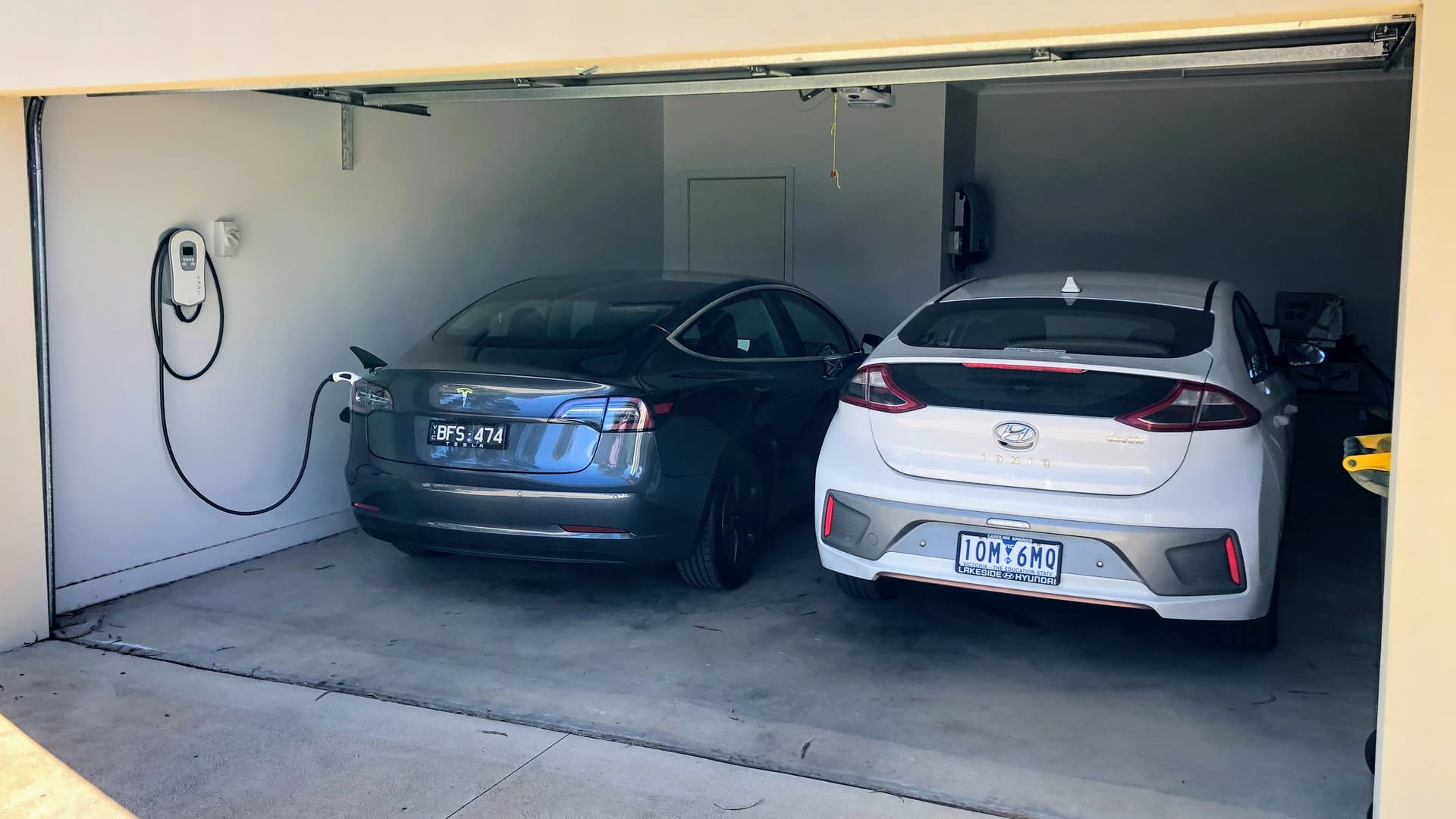
↑ My garage! I no longer own these cars.
Inner-city streets, units, etc. They're detached houses, but no driveway to put a car in, so they park on the street. There's even people who do this out in suburbia as their garage is a business/room, or they simply have too many cars to fit in the driveway. These people can find creative solutions (like the one in the image below) but will be using public charging more than someone that has the ability to reliably charge at home.
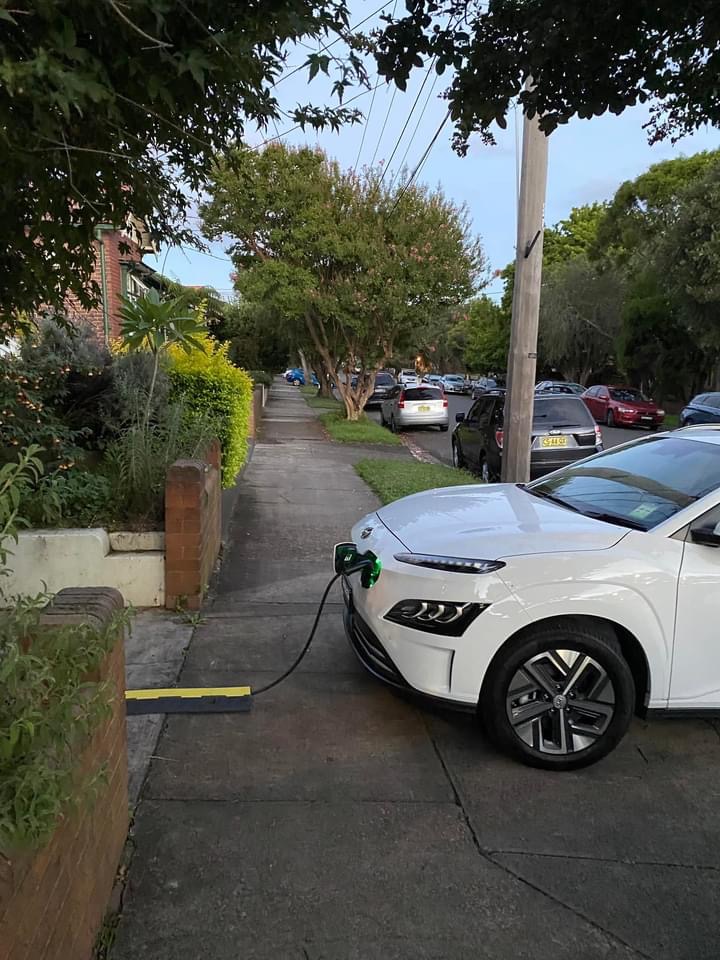
↑ Found this on Facebook and it annoyed me so much I saved it. Imagine a street full of these cables and the hazard they present to prams, elderly, wheelchairs, drunk people, etc. No thanks.
About 30% (and growing) of Australians live in medium density and high density buildings. These buildings often have parking facilities but getting an EV charger installed here can be a huge pain in the arse for multiple reasons. Body corporate doesn't want to, or if they do, the actual cost is quite high to run cabling. There can also be power supply issues with just not enough spare capacity coming in to the building. Either way, many people living in apartments use public charging regularly because they can't charge at home.
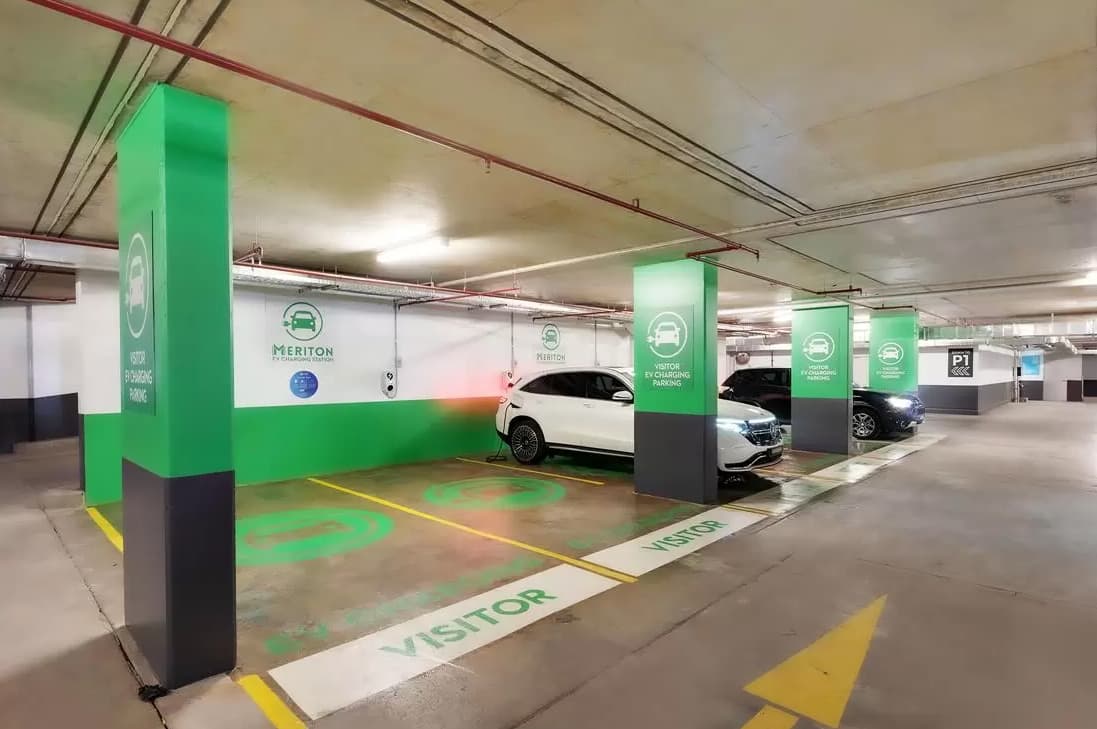
↑ Apartment charging is really no different to public charging, just that access to the charger is limited to those who live/visit.
Personally the most common reason for me to use a public EV charger is on holiday or on a long drive. I can only do a 350-400km round trip from home at best, so if I want to go further than that I need a charger somewhere along the way. The more chargers, the further I can go from home with confidence I'll be able to get back! It's not just about the journey, but I also need charging at my destination so I can get around locally (i.e: sightseeing).
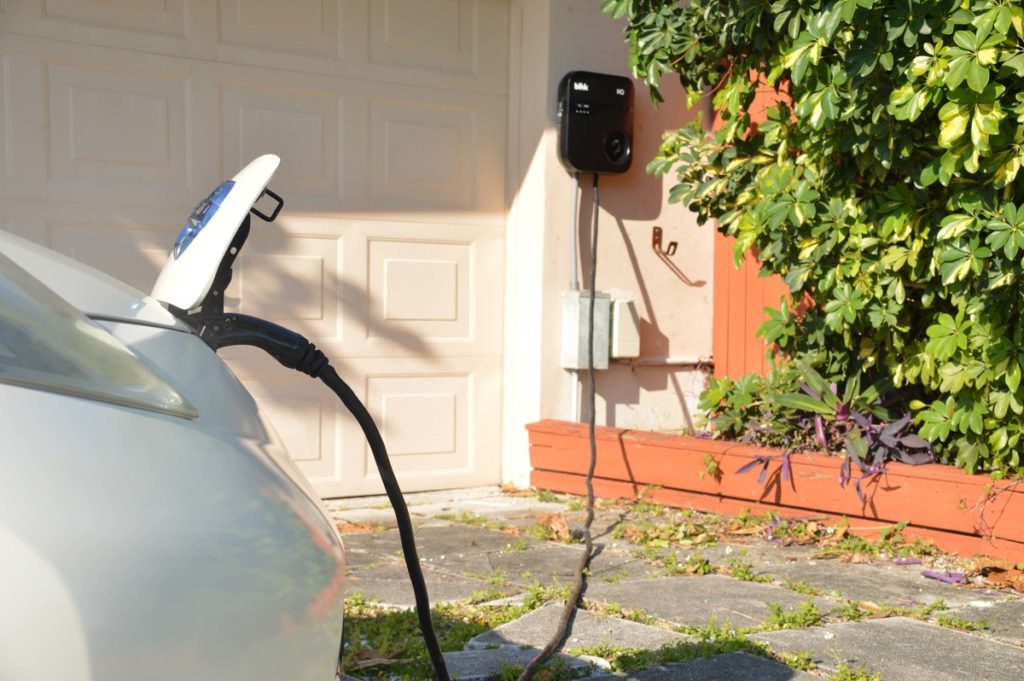
↑ Charging at a holiday house or a hotel is also not that different to general public charging or charging in an apartment, just that who can use the charger is limited to guests.
It's only happened to me once, but I forgot to plug in my car at night and I had to go somewhere early in the morning the next day. Luckily I had enough range left to get me to the closest rapid charger so I could get to my appointment (late, but would have been later if I waited at home charging at 7kw vs 100kW at a DC charger). If it happened to me, someone that is fairly organised and not in a rush, it's absolutely going to happen to less organised people, busy families, people with ADHD, etc.

↑ I normally don't use this Chargefox site in Airport West as it's only 40km or so from my house, but when I forgot to charge at home, I could top up my battery with 200km of range in just a few minutes.
Think taxi/Uber drivers, couriers, aged care/home nursing/NDIS providers, travelling sales reps, field service techs - these people drive huge kilometers per day and while they should have an EV with enough range that lets them do their daily trips without charging, it's probably not going to be uncommon for them to need to top their battery up during their working day to get their work done.
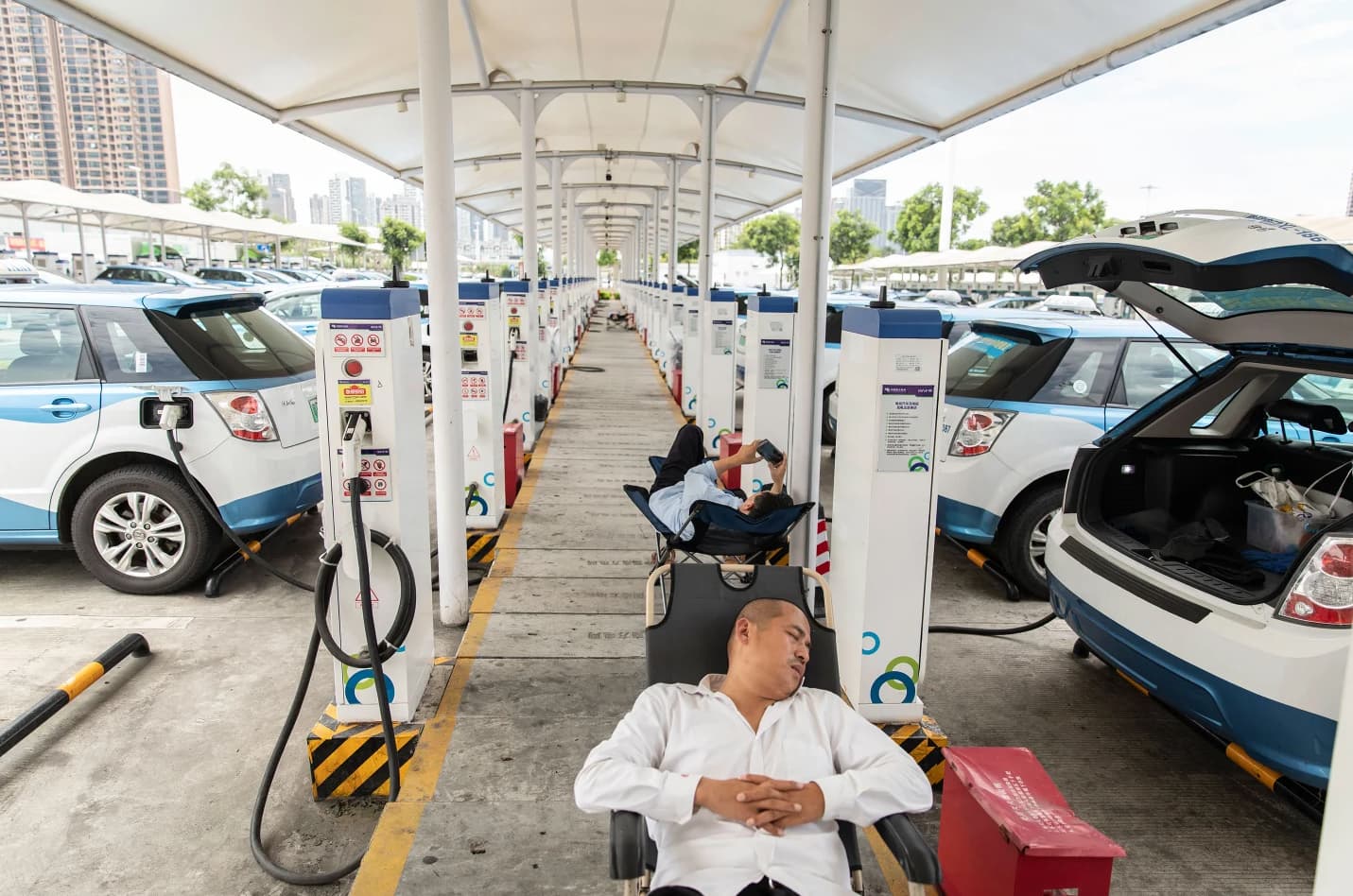
↑ Taxi drivers in Shenzhen (where most of the taxis are EVs) taking a break while their cars charge.
Sorry this post hasn't got pictures or videos, you're gonna have to read some words!
Installer - a specialised electrician that knows what they're doing with EV chargers, often designs the site as well as installs the units. You make money by getting the charger in the ground. A business might come to you and say "we want 10x EV chargers, one at each of our stores", you give them a quote for the supply and install of chargers with your juicy margin on top, they (hopefully) say yes, you do the job, get paid, done. The charger is someone else's responsibility, but you might get called back to maintain it.
CSMS Provider - develop the software used to manage chargers. It's a SaaS product and business, running in the cloud. You spend time making your software platform as good as it can be and finding customers. You don't own the chargers, the property and you don't install them.
Charger owner - you pay for the charger to be installed somewhere (that could be on your property or someone else's) and you own it. It is your asset and you try your best to monetise it.
Operator - your business makes most of its money from the use of the chargers. You might convince a property owner to pay for the charger and its install (which you can outsource to an installer) and they own the physical asset, but then they'll contract you to make it available to drivers. This usually involves adding the charger to your CSMS (which can also be outsourced/whitelabeled) and giving the charger owner a cut of the fees collected and/or a monthly fee. It might also involve physical maintenance of the charger for an additional fee (i.e: vandalism, preventative maintenance, customer support) that you might do in-house or outsourced as well.
It's not uncommon for a single business to do two or more of these different roles.
What you want to do depends on your expertise. If you own a lot of property, you might just want to be a charger owner and collect rent while an operator does all the work (for a fee of course). If you're a sparky it makes sense to get into the installation game. Got a lot of capital? Go the whole hog and own the entire stack.
Chargefox - along with Evie, the biggest charging network. They operate chargers they own (e.g: rapid chargers across major highways), operate chargers for others and are a CSMS provider for anyone who wants to pay. They were recently acquired by Australian Motoring Services (i.e: RACV, NRMA, RAQ, etc).
Jetcharge - they are an installer that used to co-own Chargefox until recently. Now they're legally separate. Jetcharge also makes/sells its own AC chargers. Probably the biggest EV installer in the country. Also have contracts with many car makers to do the home installs of their customer chargers.
Evie - at this stage probably has more chargers they own than Chargefox. Uses a 3rd party (EV Connect) for their CSMS. Site design seems to be inhouse, with the electrical work subcontracted. Unlike Chargefox, owns all the chargers they operate. Trevor St. Baker is a major investor (who is also an investor in EV charger manufacturer Tritium).
EON Charge - another installer, I've mainly seem their work on LinkedIn in relation to Evie's sites in Victoria as part of the ARENA Future Fuels and Victorian "Charging the Regions" grant programs.
Ampol - the big oil company got a huge stack of cash from ARENA and is going hard with their AMPCharge branding of public charging at their servos, other businesses and even home charging solutions. Their app/CSMS is a white-label of Greenflux according to a quick poke at the network traffic whilst using the app.
EVSE/Exploren - EVSE sell chargers at retail (of 3rd party and their own designed chargers), install chargers for home and business, and offer CSMS facilities (called Exploren) via a whitelabeled version of Ampeco's software. I don't think they own any public chargers themselves though.
Everty - an Australian developed CSMS. Been around for a while but I haven't seen many chargers using their app.
Queensland Electric Super Highway - installed by Yurkia, which is part of Energy Queensland, it's a government funded network across all parts of Queensland. Chargefox operate the network.
NRMA - they own and operate dozens of DC chargers in regional NSW. Right now they're free, but have said they're going to charge money (with a discount for NRMA members) soon. Dunno if they're developing their own CSMS (unlikely) or heavily customising a 3rd party one.
Telsa - own, operate and install their Superchargers, along with the CSMS (aka the Tesla app). The destination chargers are owned by the property owner and are not OCPP capable, so can't use a CSMS. There's a good chance they'll open the Supercharger network to non-Tesla vehicles soon like they have in Europe and committed to in the USA.
Linga - regional AC charger network. Not many around at the moment (I think 3-4 sites). Founder Adrian Kinderis seems to think that the data gleaned from the chargers is more valuable than the revenue the charger brings in. I disagree, but I guess old mate needs a USP. A year ago they partnered with first nations ICT provider Baidam Solutions but I haven't seen any new chargers in the ground yet.
Jolt - slow DC chargers (sub-50kw) paired with outdoor advertising to get drivers in with a free 7kw of charging, then the usual payments after that. Lots of these across Adelaide. Also partnering with AusGrid in NSW.
There are likely others operating in this space but these are the main players I've noticed.
The core product here is electricity. People use your charger because they want electricity for their car. But kinda like a petrol station that uses the fuel as an excuse to sell delicious overpriced drinks and chocolates, EV chargers can be the reason people visit you instead of somewhere else. Here's a few ways to monetise an EV charger:
Free - electricity is relatively cheap, so you might want to offer it to your customers as a little perk or as an offering your competitors nearby don't have. I don't actually know if drivers are incentivised by free charging (I'm not) or if it's worth the expense compared to recouping your costs by charging for access.
Free with advertising - Jolt does this across Adelaide and parts of Sydney. They put 25kW DC chargers inside large outdoor billboard TV screens and offer the first 7kw of electricity free. ARENA even gave them $1m to test it out. Volta in the US does the same thing.
Per kWh - by far the most common way to bill users is simply for the electricity they use. For example: if you pay 28c/kWh for electricity, bill your drivers 50c/kWh or something. The 22c/kWh difference is your margin.
Idle fees - more charging networks are adding idle fees, a per minute fee that kicks in 20-30 min after your car is done charging. Tesla will slug you 50c/min at their Superchargers, or $1/m if all the other charging stalls are busy, to motivate you to move your car so others can charge. An excellent idea in my opinion.
Subscriptions - I haven't seen this in Australia yet, but overseas you can pay a monthly fee and get cheaper charging rates compared to "PAYG" access. BP Pulse in the UK, Fastned in Europe and Electrify America in the USA do this. Their markets have much more choice, so by offering a subscription you keep a driver "loyal" to your network.
Car manufacturer subsidy - Chargefox are big on this in Australia, partnering up with car makers like Nissan and Mercedes Benz to offer multiple years of free (with limits) charging to those car owners. I assume the car maker pays Chargefox a discounted fee (possibly just the cost of electricity) whenever one of their drivers charges up.
Faster charger, more expensive - it's common to see the ultra-rapid DC chargers cost more to use than the cheaper 50kw chargers. This reflects the much higher capital cost of the ultra-rapid units.
Bonuses - I've seen Evie offer free chips at Red Rooster at one of their chargers in a Red Rooster car park. I'm no marketing expert, but I think the aim here is to get people into your shop with an incentive, hoping some customers will spend money there, ideally overall spending more than what the promotion costs overall. The benefit for Evie is being able to use Red Rooster's valuable car parks to install their chargers.
Finance - Chargepoint and Blink has been very successful in the USA offering to finance all the costs for an EV charger. The business/premises then pays a fixed monthly fee (presumably with a juicy profit on top) to repay them over a few years. Helps businesses that want an EV charger but don't have the up-front funds or have budget restrictions on capex vs opex. This doesn't seem to be a thing in Australia.
There's probably more innovative ways to extract money out of EV chargers, these are just the ones I've seen.
The bulk of funding for every DC charger out there today has come from governments. The companies above win the grants and use that money to install the chargers that they then own and make money from. To be fair, it isn't free money - all the grants appear to be co-investment (i.e: the project will cost $1m, you chuck in $700k, government chucks in $300k). The more you can co-invest in a project, the more likely you are to get the grant.
Park N Plug worked hard to try and win money in the ARENA Future Fuels first round, but was thoroughly outclassed. Evie got $8.85m, Ampol for $7.05m, Engie got $6.85m, Chargefox $1.4m and Electric Highways Tasmania got $400k. $80m of investment came from the companies, plus the $24.55m of grants from ARENA to install 403 50kw+ DC chargers. That's roughly $260,000 per charger, with 30% funded by the government.
This blog post from Evenergi shows all the state government efforts past and present.
I reckon there will be even more cash for EV chargers coming over the next few years as the country catches up with a decade of inaction. My advice would be to get all your shit together while it's quiet, get some runs on the board, show you're a viable business and network with the policy makers so when the inevitable grants open up you are ready to pounce.
The actual cost of installing the charger I will get to in a dedicated post about installations. This section uses the simple and common pricing model of billing drivers for each kilowatt of electricity they use and trying to work out how much money a charger can pull in.
Those other expenses include:
Obviously, the more the charger is used or the more you charge for its use, the more profit you will make as many of those costs are fixed.
I wish I could give you more accurate usage estimates, but usage stats for chargers is considered commercially sensitive information. Even in ARENA funded projects where "learnings" about the project are made available to the public, how often they are used is not included. This video from 2021 by Chargefox is the closest glimpse at usage stats I've seen.
If you ever find any stats out there for Australian EV public charging usage, please share them with me!
The beauty of EV charging is that you can slap one in anywhere there's electricity and there's electricity everywhere. Any parking spot can now be a petrol station!
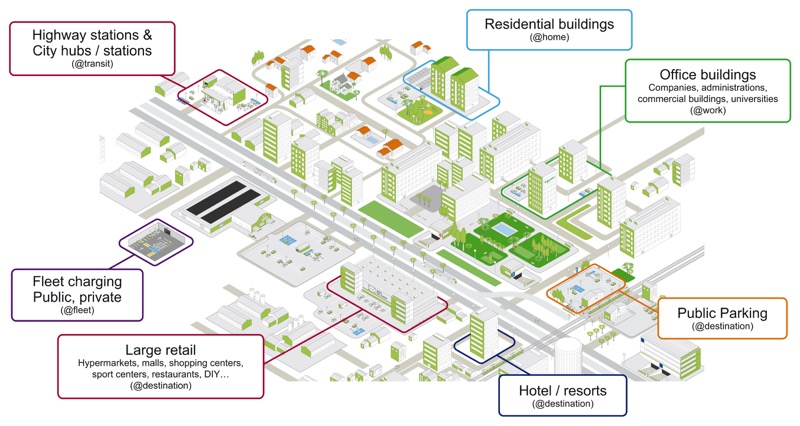
↑ Shamelessly stolen from Schneider's wiki
There are a few things to keep in mind:
Available power supply - in order to avoid costly power supply upgrades, is there enough spare capacity at the site to handle your proposed charger? Even single phase AC chargers can be an issue in older homes.
Ease of parking - if there's only two parking spots at the location and one is dedicated for EVs, there's a good chance non-EV drivers will park there regularly and your charger is now useless. You also need a lot of space so people can reverse park, plug in and still walk around the car
Nearby facilities - most people don't want to just sit in their cars and wait while it charges. Toilets, food, shops, seating, protection from the weather, all within walking distance are important when people decide where to charge.
How long do people hang around - nobody is spending 5 hours at a highway rest stop, so installing an AC charger is pointless. Installing a DC charger at a hotel that'll charge a car in 20 minutes is also a waste, as most users will be guests and they're staying overnight. How long someone spends there determines if an AC or a DC charger is appropriate.
How busy is the area - it's common sense, but the busier the area, the more likely the charger is to be used and the more revenue you'll get from it. It also means you might want to install multiple chargers or have room to add more later.
Existing EV infrastructure - if there's already an Evie and a Tesla charging station at the same spot, unless that spot is super busy, chances are your chargers won't be used as often and your capital is better off servicing a different area.
Incentives - does the local council or state government have a grant program that'll contribute some of the cost if you install it in a certain area? Stretches your dollar further if you can put up with the bureaucracy.
To give you some inspiration on the types of places EV chargers are useful to the public:
Petrol stations - kinda obvious, but servos are actually not bad places for a DC charger, even if they do smell like petrol. Some of them have half decent food and clean toilets too. Probably want high speed DC chargers here as they're kinda boring to hang out at.
Fast food outlets - perfect places for 50-100kw DC chargers as you can fill the car up in the 20min-40min you stay there to eat. KFC, Red Rooster, McDonalds, Hungry Jacks, Subway, Nandos, Oportos, etc.
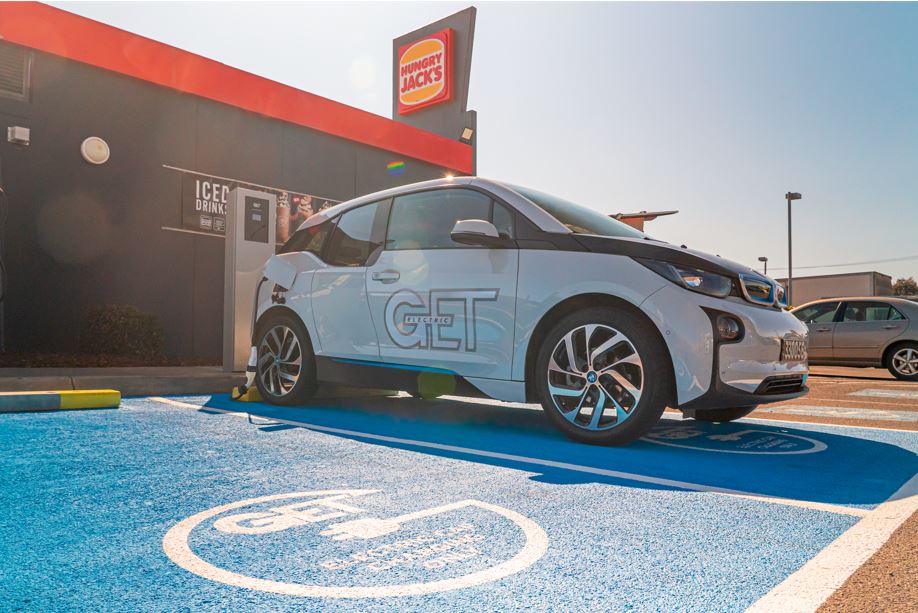
Shopping centres/big box stores - huge car parks, great amenities, located in areas people want to go and strong power supplies. It astounds me that every shopping centre in Australia hasn't got at least an AC charger, let alone a few DC chargers and new ones are built without them!
Supermarkets - particularly useful for people without off-street parking. Do your weekly grocery shop and fill up the car at the same time. AC or DC chargers will suit.
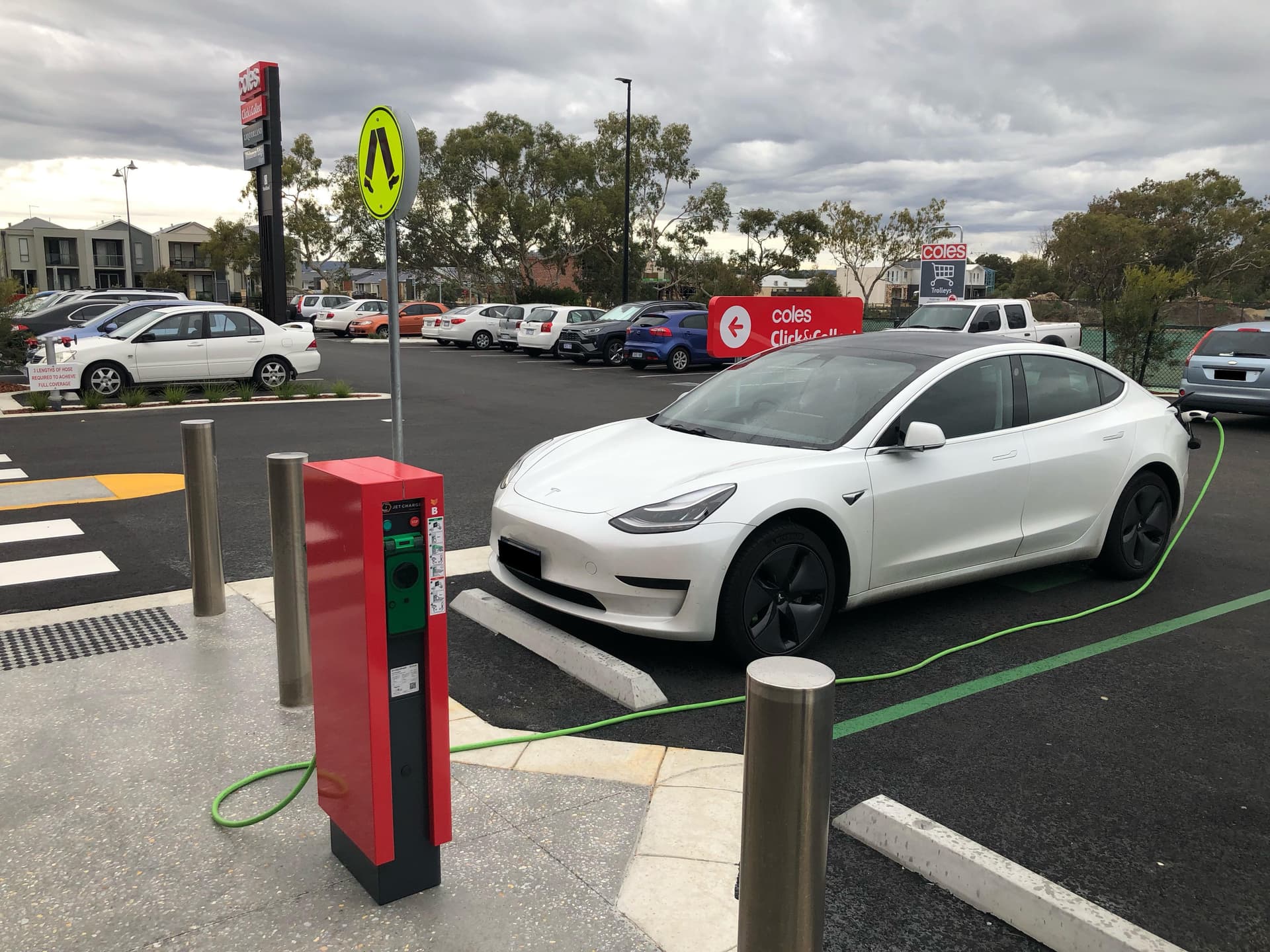
Gyms - I don't visit the gym (I should, but I don't), but people tell me they spend about an hour there. Perfect spot for a low power DC charger I reckon.
Hotels, AirBnB - a few basic AC chargers for guests to use overnight is a no-brainer. Giving it away for free is up to you, but collecting money on it makes sense. It could even turn a small profit for the property.

Anywhere you spend under an hour, DC charging. Anywhere you spend more than hour, AC charging. if it's a mix (sometimes you pop in, sometimes you can stay for a while) install a DC and an AC charger to cater for both types of drivers.
Chargefox published a report on how they determined the right spots to install $15m worth of ultra-rapid chargers across Australia.
A big part of my efforts at Park N Plug were finding locations to install an EV charger. We don't own any property suitable for public charging, so we had to convince owners of properties to let us install a charger. The deal was:
Here's the pitch I'd send property owners, along with a request to meet up on their premises to discuss further:
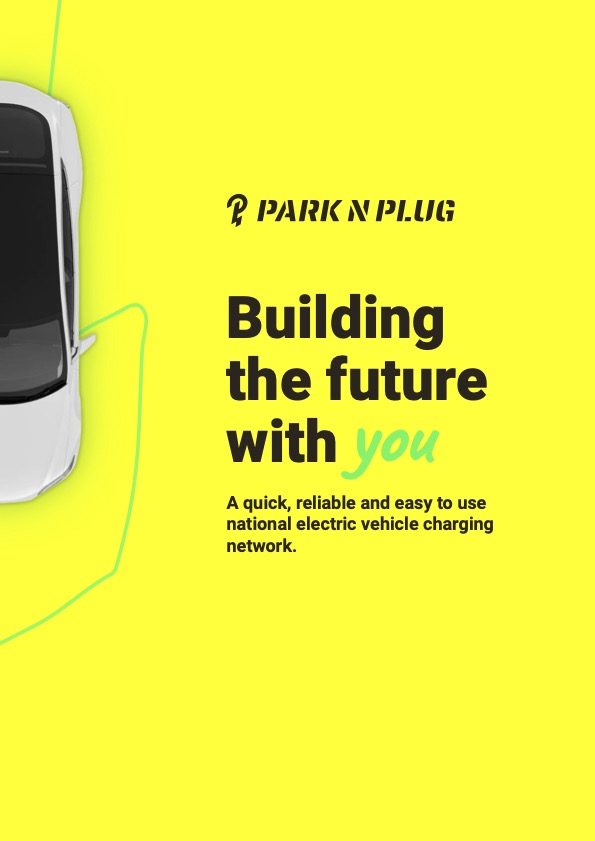
You'd think this would be an easy sell, but property owners (the ones who actually responded to us) had objections:
We did end up find a few friendly sites around Melbourne (about 20 all up I think) and got them to sign, but we didn't get an ARENA grant, which meant our extra investment (contingent on getting the grant) didn't come through and we didn't have a spare $50k to fund the charger ourselves.
I think many of these objections are fading away now as more and more people have EVs, drive them, see them around and hear positive words from the government about them. I'd be confident trying again to give away a free EV charger in 2022 vs 2021, that's how much awareness has increased in the last 12 months alone.
So you've got a great spot in mind, but how can you quickly determine if the install is going to be possible without major infrastructure upgrades? Here's an example of the process I used for Park N Plug's ARENA grant application.
One of the many shopping centres I visited was in Warun Ponds. The facilities manager there showed me all their switchboards and let me take photos that I could then show to our electrician. The electrician and myself were able to determine the incoming supply feed, the total usage of all the circuits and if there's any supply left over after those circuits are serviced. For example:
You may even be able to squeeze more without a major upgrade by looking at what's connected to each of those 32A circuit breakers and seeing if they really do use all 32A of it. Let's say out of the six, four use all 32A every now and then. Leave those alone. But one breaker only ever uses a max of 20A and the other uses 24A, you can replace the breakers on them with two 25A breakers, freeing up an extra 14A for a total of 122A @ 400V of spare power. That would allow an 80kW charger, which if it has two plugs, could charge two cars at 40kW each.
The photos also let the electrician know what can fit in the switchboard (if it's full they'll need a new bigger one, which is a fair bit of work or a sub-board) and any entry/egress points for cabling within the plant room area where the switchboard is located. They'd obviously come out on site before quoting the job, but the photos gave them a bit of a heads up which they appreciated.
Pro tip: older shopping centres are great for this, as when they were built they had huge incoming supply feeds to handle all the halogen/incandescent lighting and inefficient air conditioners. By now they've all been replaced with LEDs and modern chillers that use a fraction of the power, but the supply feed is still there with heaps of spare capacity.
Once I knew there was a switchboard available with enough supply, I could use Nearmap's high resolution imaging to get approximate cable lengths from the switchboard to a position in the car park. Here's a rough sketch I drew up to show the centre management the locations we had in mind:
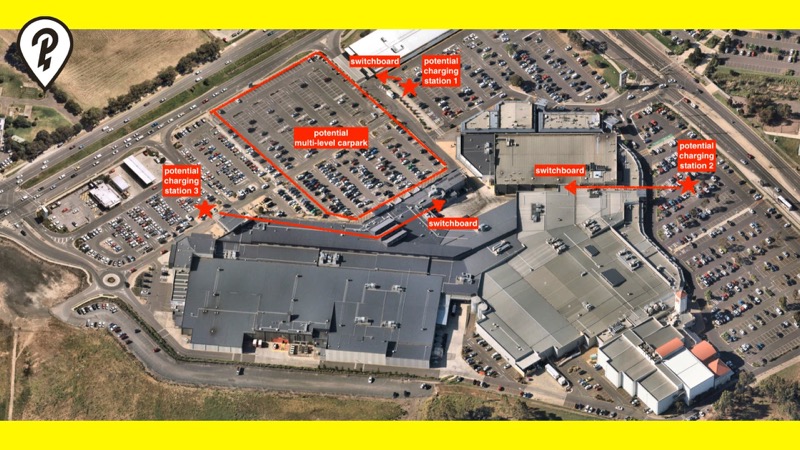
Charging station 1 was our preferred option as the cable run is super short and hence, cheaper. It would require trenching under the road into the car park, but it's not very far, just 10m or so. Location 2 is longer still and would require a cable run through the roof of the shopping centre as well as trenching. Charging station 3 was even longer, as the parking area in front of where the switchboard is located was due to be demolished as part of a multi-story car park upgrade.
I didn't know where else to put this so it's going here. The combo of solar power and EV charging can be a sweet opportunity for the property owner to make additional money. If you're a business with a big solar array, chances are during 11am-3pm time period, you're exporting to the grid and getting paid sweet fuck all for that power.
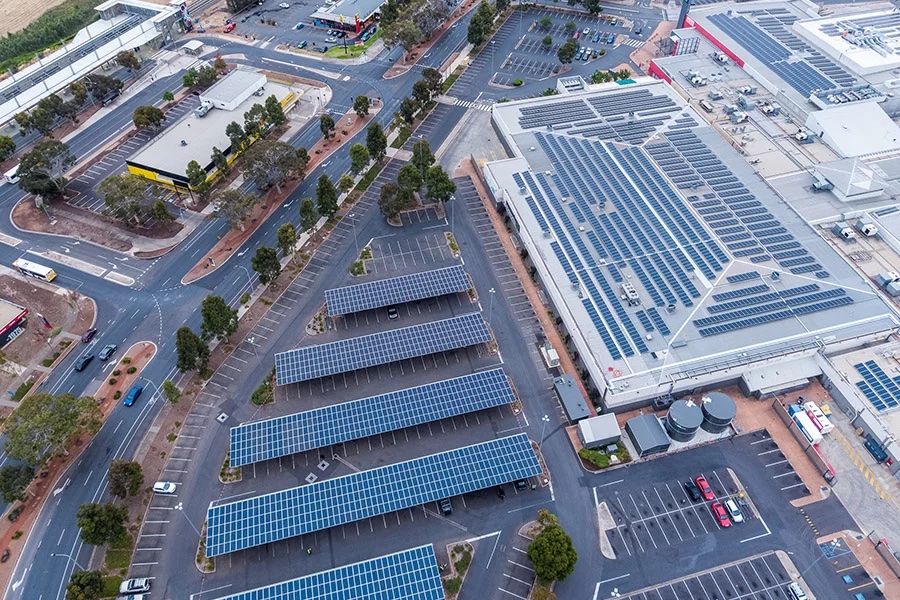
↑ The roof of Elizabeth City Centre in Adelaide
With EV charging on the premises, you can sell that power to a driver for 40-50-60c/kWh instead of 2c or 3c to the grid, or in some areas, giving it to the grid for free.. It doesn't need to be sold to customers either, but you can sell it to your employees for 20c/kWh by providing workplace charging. Could even be a reason to get them back into the office if they don't have off-street parking at home.
Out of Spec Reviews has multiple videos of impressive charging setups from overseas where their needs are far more advanced than ours due to the large number of EVs on the road there.
As cool as these sites are, they require a fair chunk of capital. If I was a property company, I would be visiting these sites, taking notes and planning to do the same here. It won't take long for demand to build in Australia.
If you manage to convince a property to let you install a charger, you need a contract.
I'd like to share with you the contract we made for Park N Plug, but it cost us a fair bit of money for a lawyer to write it up and I'm not sure if my business partner would appreciate us giving it away for free for anyone else to use! But here's a peek at the first page just to prove it is real and it took us a lot of effort to create. The entire thing is 12 pages.

The basic idea of the contract is outlining each party's responsibilities. Who does what, when do they do it, what happens if this scenario arises, who owns what and so on. It was tough finding a lawyer with expertise in this sort of thing as it isn't a common occurrence so there was a lot of explaining of basic EV related stuff so the lawyer could word everything appropriately.
We hit a stumbling block when the party we gave it to wanted us to pay their lawyer (who wouldn't disclose their price before us agreeing to it) to review it before they signed it. It was such a ridiculous ask for a small startup like us, that we said no and they didn't want to go any further.
This is kinda obvious, but you likely need public indemnity insurance. If someone uses your charger and they hurt themselves or their property is damaged and its your fault, it could bankrupt you. This actually wasn't that hard to obtain - call a few insurance brokers, tell them what you're doing and they will provide you a quote.
You may also want to insure the charger itself, but I don't think it's necessary unless you're building huge DC fast charging sites worth $1m+. If you are, then you probably have a lawyer advising you on this sort of thing.
You've convinced a property owner to sign a contract allowing you to install a charger on their site. Excellent! Now it's time to buy stuff and get the tradies involved.
I would love to give detailed pricing for each item here, but that's an incredible amount of work. The prices keep changing and it's so specific to your site's needs. I've tried to give rough pricing so you have a general idea.
It's tough to get pricing for 50kw+ DC chargers, but they start at around $25,000 for a Chinese-made 50-60kW unit. The prices just go up the more power you want. Those fancy 350kw Tritium units are in the hundreds of thousands of dollars price range. If I was in the market for a 50kw+ DC charger, I would talk to ABB and Sinexcel. Both these suppliers were the nicest to deal with and responded quickly and honestly to a pissweak little startup like Park N Plug. Some of the other brands simply ignored us or wouldn't give us pricing.
AC chargers can just be ordered via the usual range of electrical wholesalers like Middy's, Rexel and Blackwoods that any electrician will have access to. There's a few brands to choose from these days. Schneider, ABB, Delta/NHP, Evbox/Wallbox, Fimer and ZJ Beny just to name a few. To give you a rough idea on price, here's three 22kW AC units with OCPP and 4G support that Blackwood sell:
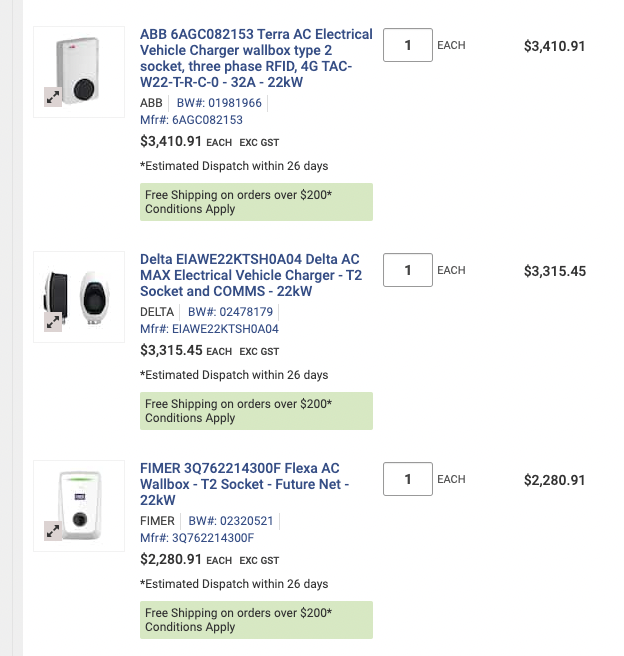
You also need the following additional bits and pieces:
Type C MCB and/or Type B RCD - so the cables don't melt and so nobody gets electrocuted (some chargers have an RCD built-in so you just need the MCB). Also double check with electrician, the latest Australian Standards (which are a pain in the arse to get for free unfortunately) and the installation guide of the charger.
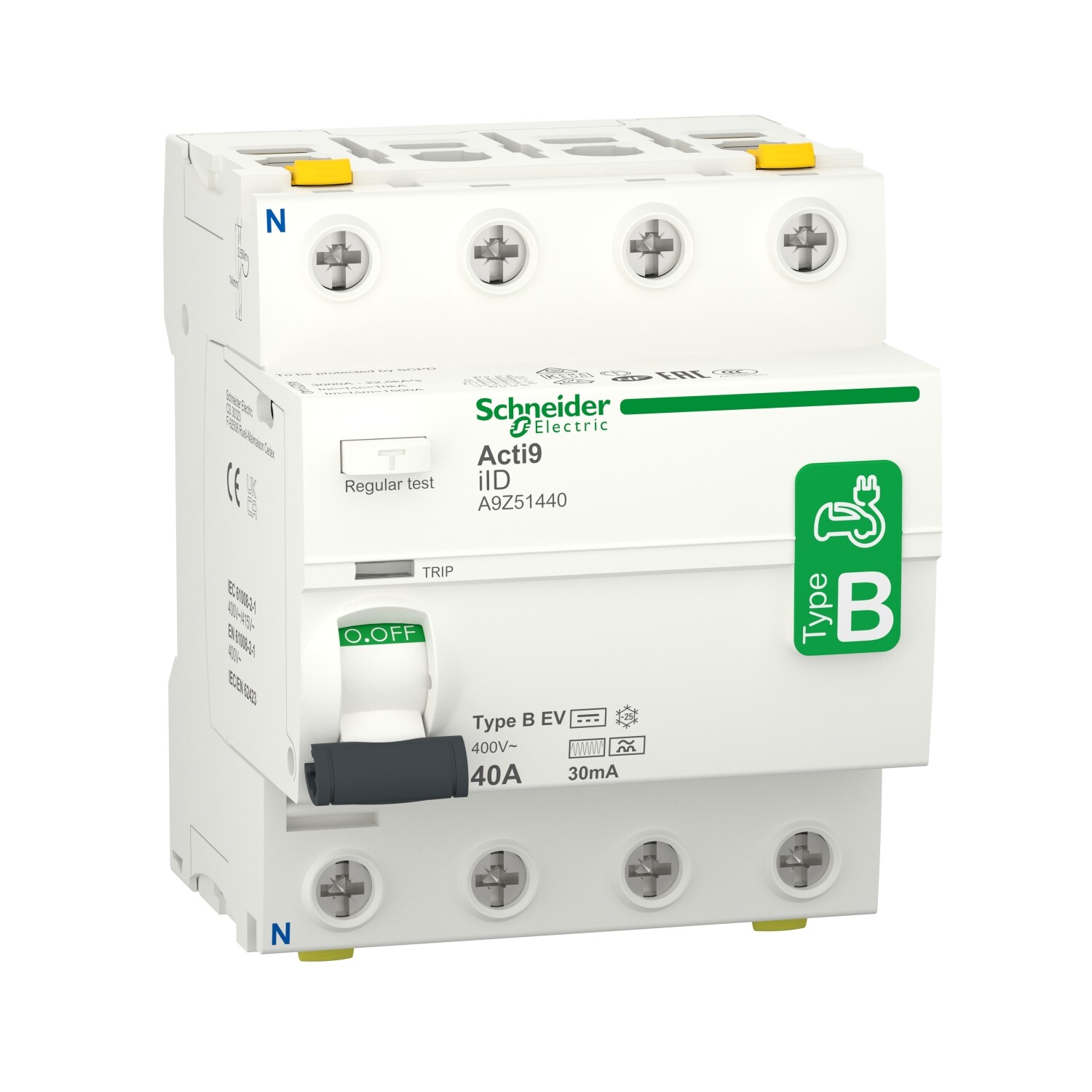
Pedestal/concrete pad - if you're not going to mount the charger to the wall or the floor you need something to mount it to! Most wall mounted commercial grade chargers have a pedestal option that fits nicely. Concrete pads are needed for bigger DC chargers.
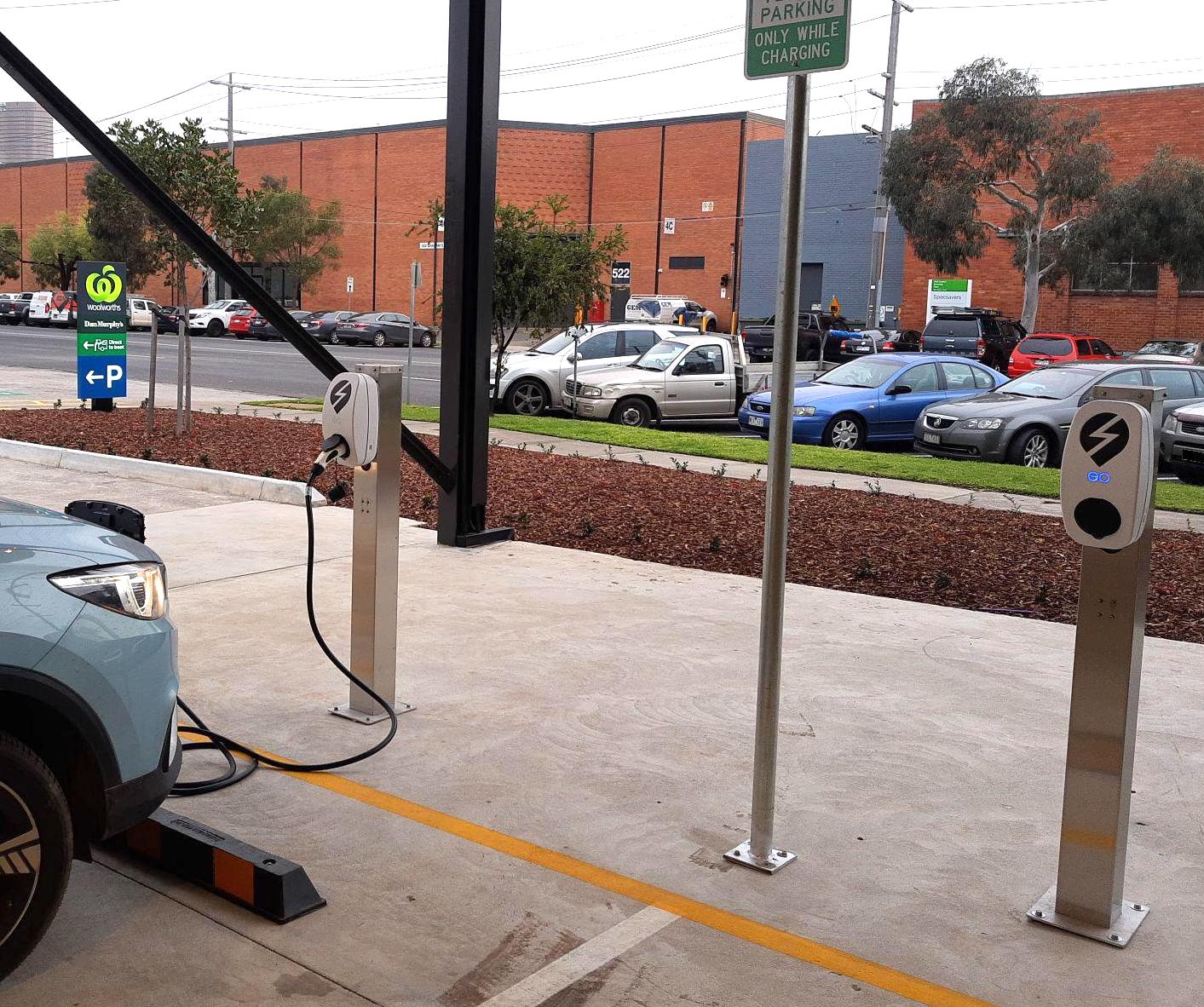
Cabling, conduit, trays - the type of cabling can be determined via jCalc's handy AS/NZS 3008 calculator. Double check it with a real electrician of course. Cable can be anywhere from $5/m to $100/m depending on the length and load it needs to handle. You also need to chuck that cable in conduit or on a cable tray depending on where it is. That costs money too.
4G SIM card - need a way for the charger to talk back to your CSMS if you're billing customers for use. Tip: visit the site with a smartphone and see which telco has the best signal in that area. Optus, Vodafone or Telstra.
This is all the stuff around the charger to make the area look nice and friendly for drivers.
Signage - parking signs to dissuade ICE cars parking there, or even EV drivers from parking there but charging.
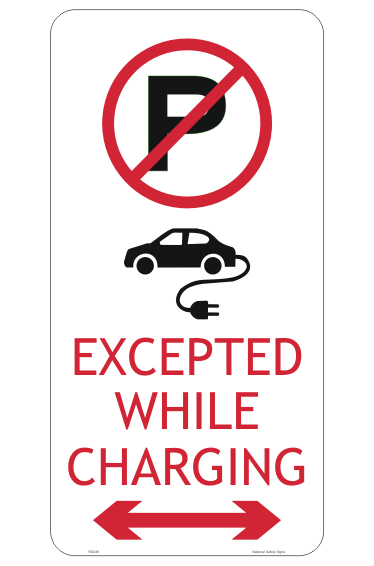
Charger wraps - turns a boring beige box into something a bit more exciting, builds your brand, has a QR code on it, whatever you like.
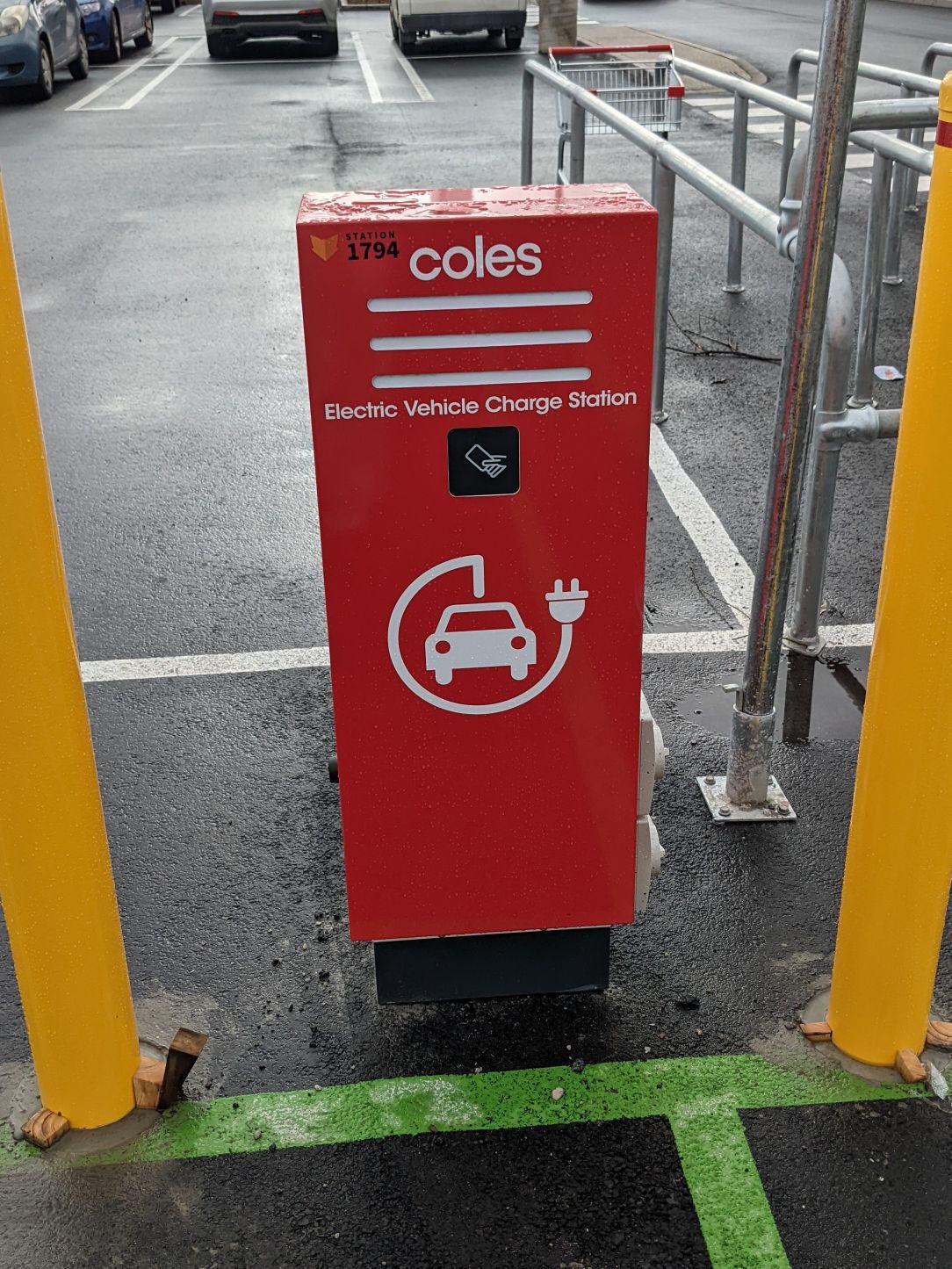
Ground/wall markings - make it nice and obvious that this is an EV charging spot.
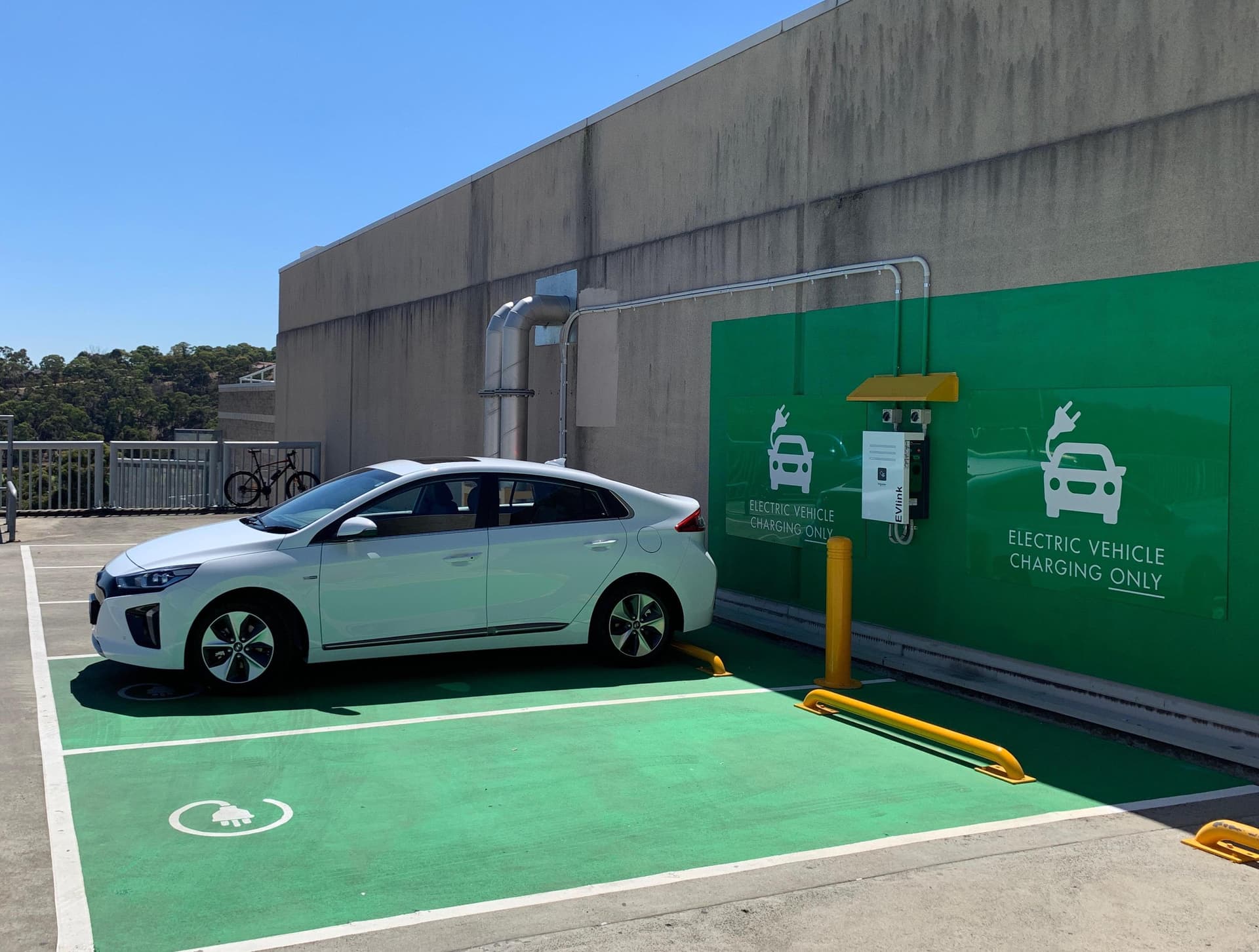
Bollards/wheelstops - to protect the charger (if it's floor mounted) from numpties who can't park.
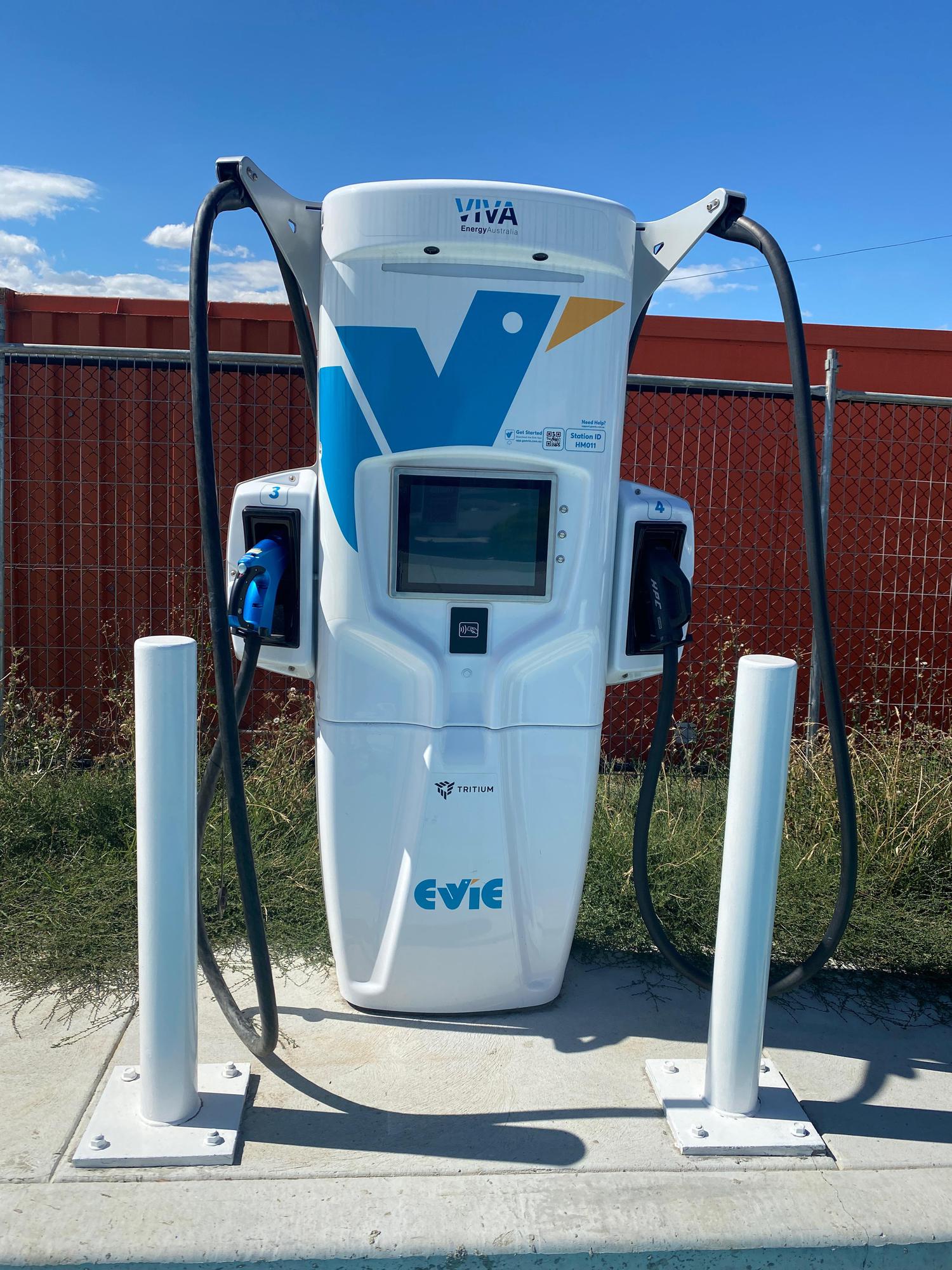
Shelter - it's safe to plug in an EV while it's raining, but it still sucks getting wet while doing it. Solar canopies are cool if you have the budget!
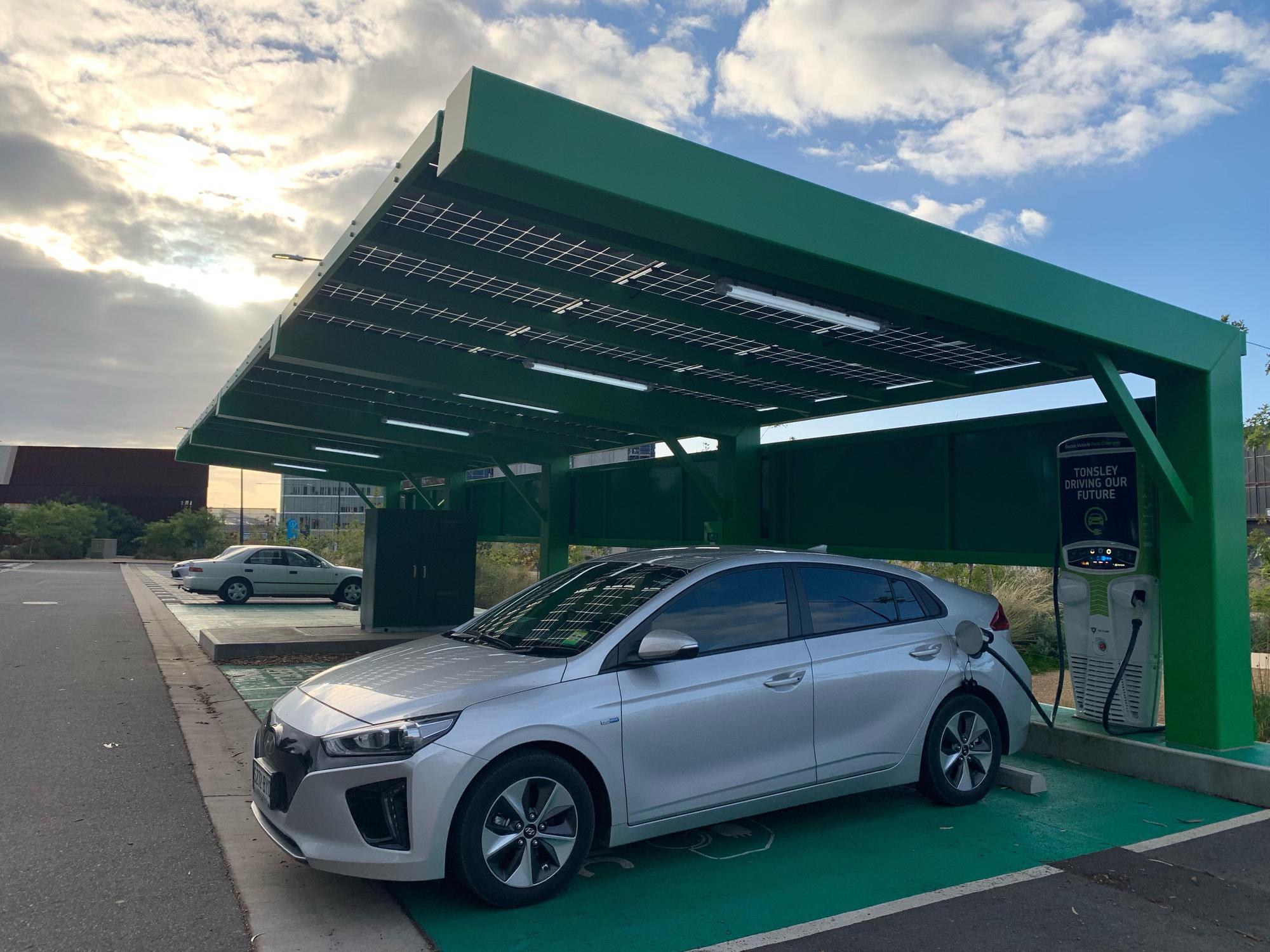
Lighting - bright lights make people feel safe when they're charging at night, consider adding extra lights as part of this project if the area is a bit dim.
Security cameras - you might cameras installed depending on the location so if your precious chargers do get vandalised you can tell the police. More appropriate for expensive DC charging sites than a single AC charger.
Where you might want to install a charger is far from the switchboard, or there isn't enough power on site for the chargers to operate. This is when your project goes from simple to complicated.
Trenching - Ever walked down a footpath or road and seen the poorly patched up bits with asphalt? That's likely the results of trenching.
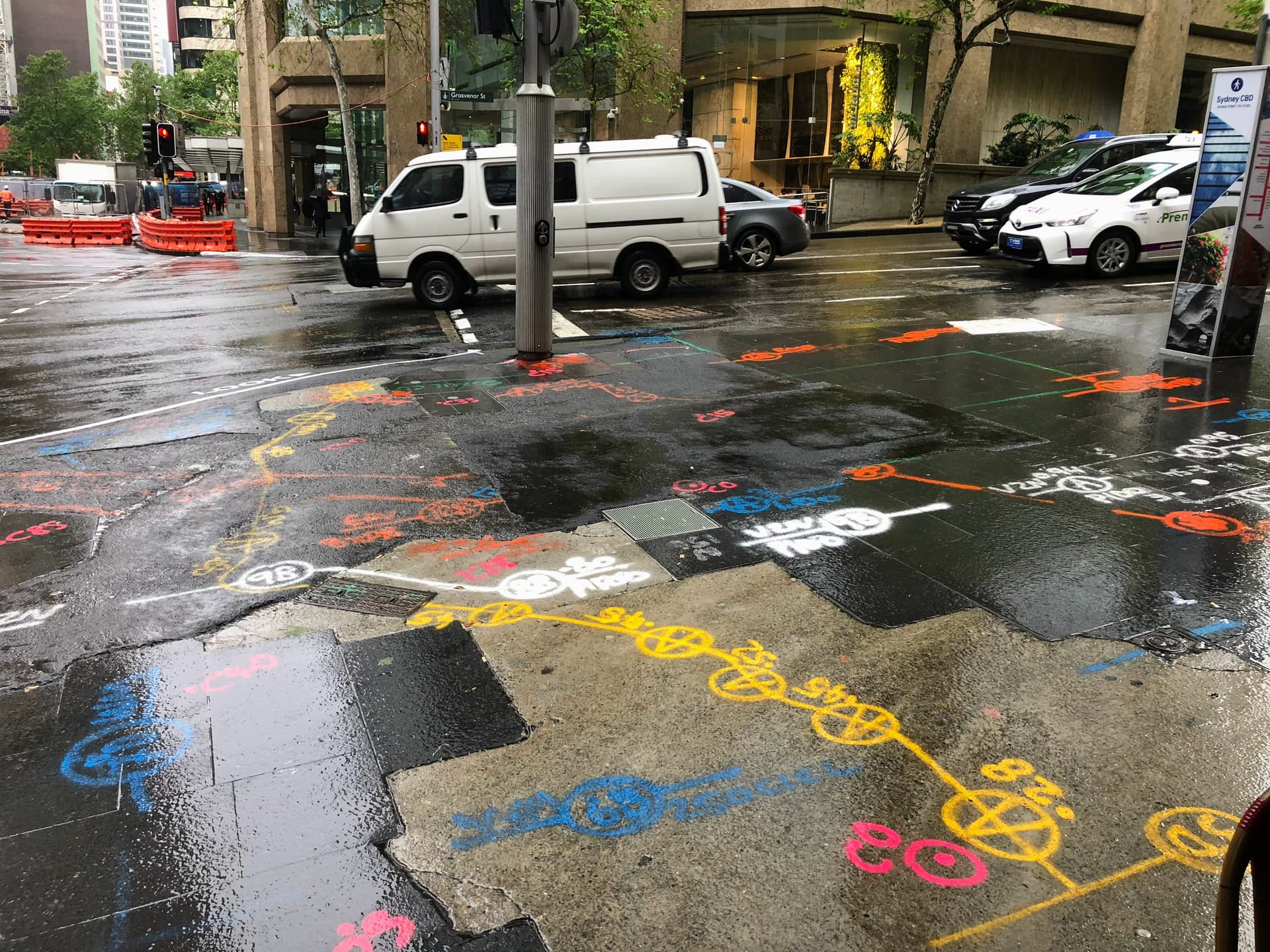
An electrician gets on the excavator and cuts out a slice of the dirt/concrete/tiles/asphalt/whatever, puts down a plastic pipe in it (aka conduit), then covers it back up. The cable can then be run through the conduit to the other side.
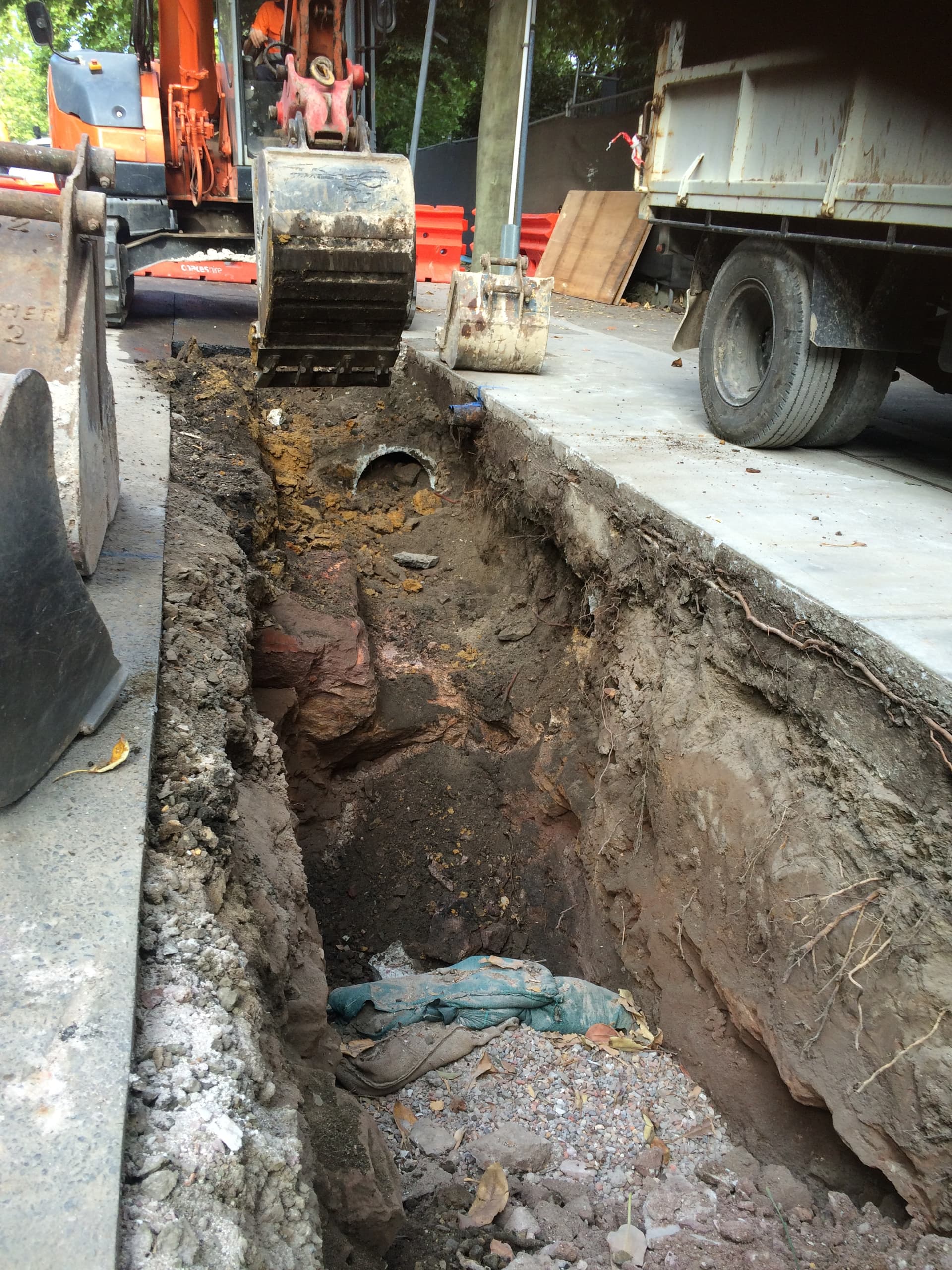
When there's stuff on top of the dirt like concrete or asphalt, it can take time, it's expensive, there can be stuff in the way you didn't know about (dial before you dig!), it looks bad after and local councils hate it, but often there's no other way to get the job done when retrofitting a new electrical appliance. Look at this beast in action tearing up the road:
It's common and not really a problem for any tradies, but I really like chargers that can go on a wall as it's faster, easier and cheaper. Unfortunately it isn't possible for DC fast charging units above 25kw, which is one reason why the costs of simply installing the charger can cost more than the charger itself.
Horizontal Boring/Drilling - This is a great example of running a conduit for power cables under a road without having to dig up the road using a technique called horizontal boring.
They dig a small hole on one side, then run a long pipe under everything that pops out the other end. Usually a site survey is done using an x-ray or radar or something to detect any obstacles. I don't know the costs - I'm sure it isn't cheap - but if trenching isn't possible for whatever reason, this could be an option.
If there's no spare capacity on the existing electricity supply at your chosen site, you'll need to upgrade the supply feed. There are ways of augmenting the grid with batteries/solar and you can do dynamic load based charging (i.e: the charger output is limited by the consumption on site in real time), but I don't have much experience with that.
Also once you go above a certain supply level (120A or 170A I think with Powercor - I'll need to check), you change from normal sane tariffs to dreaded "demand charges" where your power bill isn't based on just how much power you use, but also how much capacity in the grid the DNSP has to reserve for you should you decide to use all that power at once. It can be quite expensive.
The DNSP for the area (Distributed Network Service Provider, as we call them in Australia) will be more than happy to upgrade your supply this - but it'll probably cost you an arm and a leg and take months to happen.
I'll update this section with more details info on grid upgrades and power pricing later. In the meantime, I strongly suggest reading Evie's Lessons Learnt Report from September 2020.
Lesson 5 in that document drops a little hint at what it costs to upgrade the power supply - "our benchmark average connection cost is ~AU$220 per kVA (albeit with a per-site variance of >100%!)" - which they say is expensive, but still cheaper than a battery solution.
Let's say you wanted to install two 60kW DC fast chargers on a site with no spare capacity. That's roughly 130kVA. If you asked the DNSP for an extra 150kVA, that's $33,000 on average. Could be much higher depending on site and what the DNSP can provide or the minimum they'll let you upgrade to.
Powercor has an estimator tool on their website you can mess around with to get a very rough price estimate. But it only works if the location hasn't got underground power cables. Underground power can be upgraded but just not via this map.
I was lucky enough to be on-site when the Chargefox station in Euroa off the Hume Highway as it was getting installed for a blog post. Evan Beaver is a top bloke who let me take photos on the day I was there and sent me some photos from the days I wasn't there. Guided me through what was going on and I learned heaps from him way before I ever thought of doing a startup in the EV space.
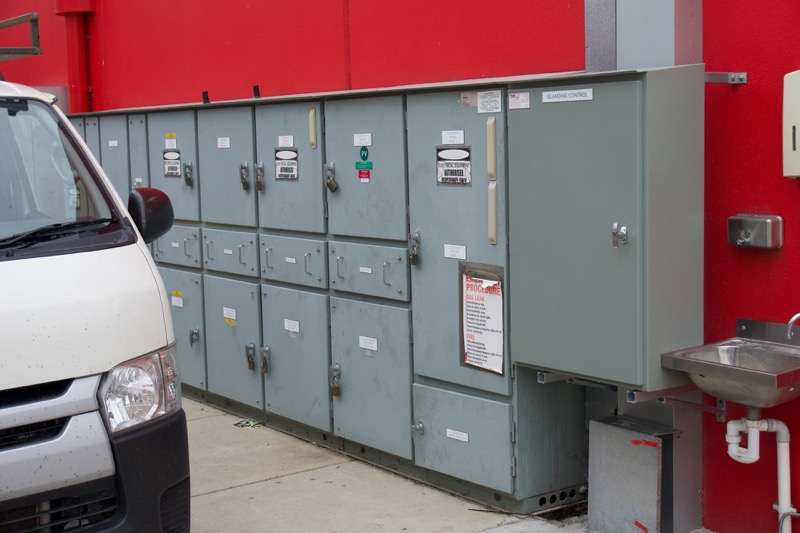
↑ The outside of the main switchboard for the building. This is where the electricity from the grid enters the property.
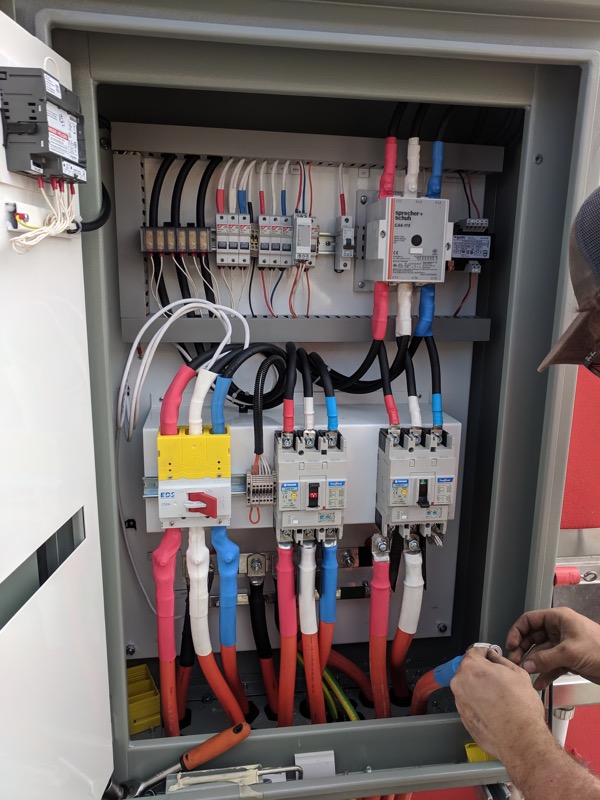
↑ Inside the switchboard. If I recall correctly, this is the supply feed for the chargers, not the entire building.
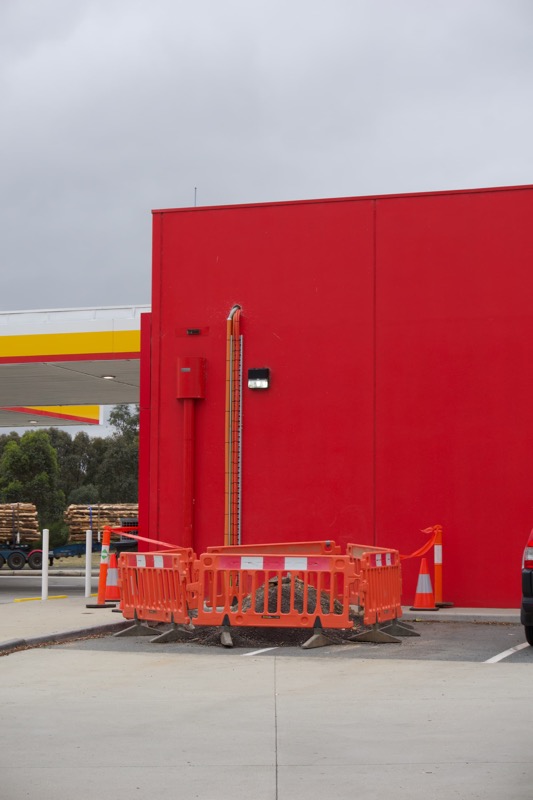
↑ This is the other side of the building the switchboard is on. The cables go through the roof of the building and outside, then down and into a hole in the ground.
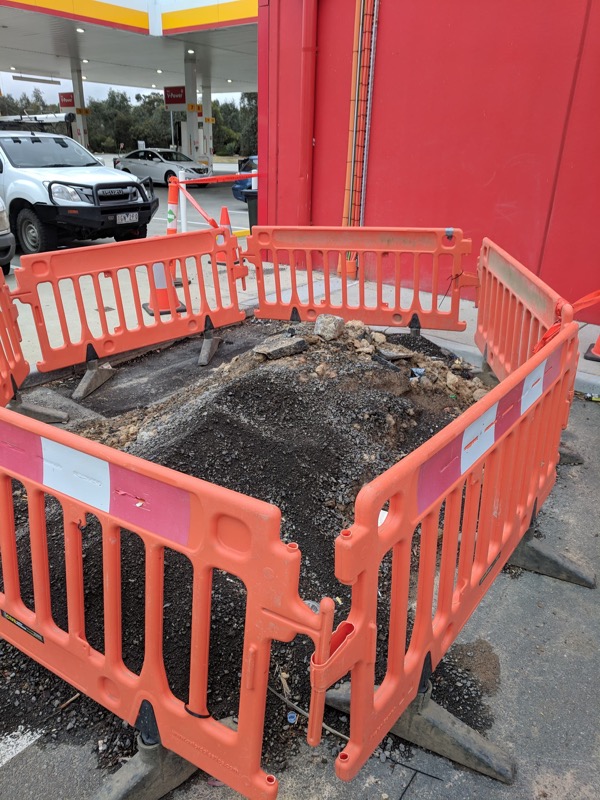
↑ The hole in the ground where the trench under the car park begins.
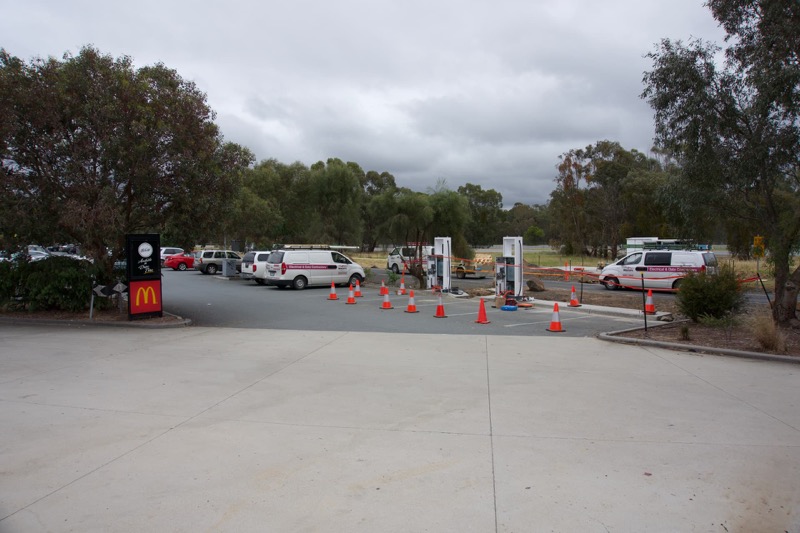
↑ The carpark the cables go under
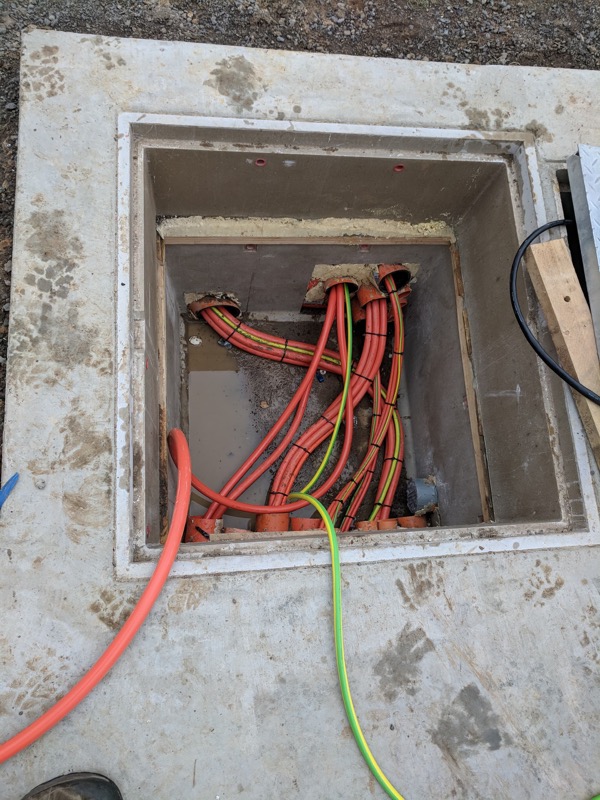
↑ To this manhole.
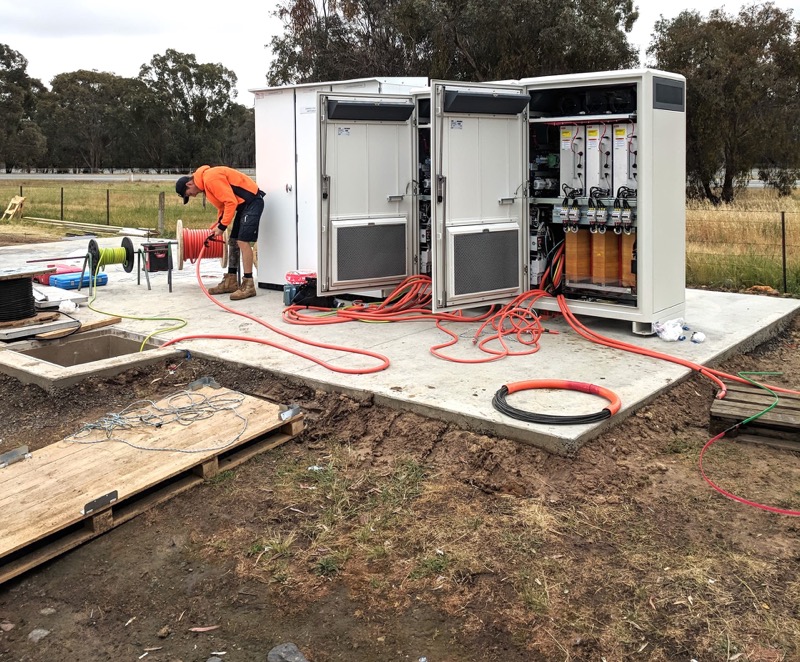
↑ The cables are run into the box with the closed door that contains more switchgear and isolators. The boxes with the open doors are the rectifiers for the chargers and they connect to the boxes on the left.
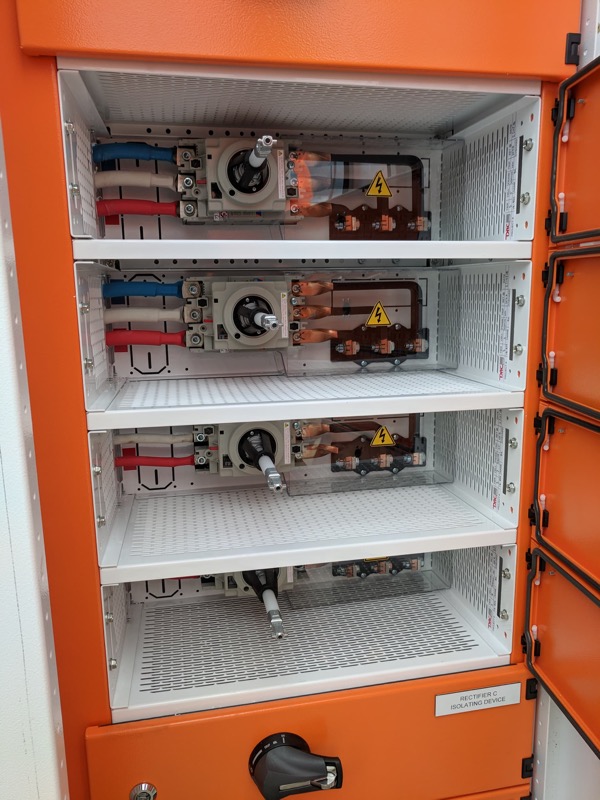
↑ Here's a close up of the isolators.
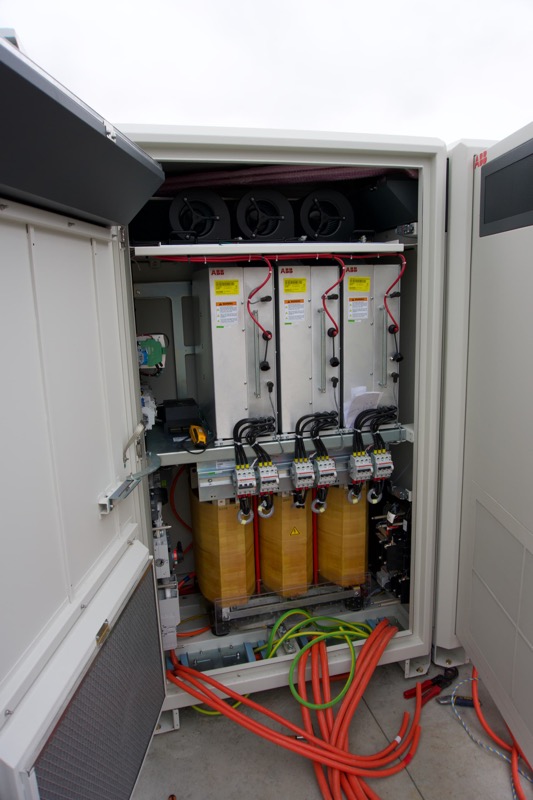
↑ Here's a close up of the rectifiers.
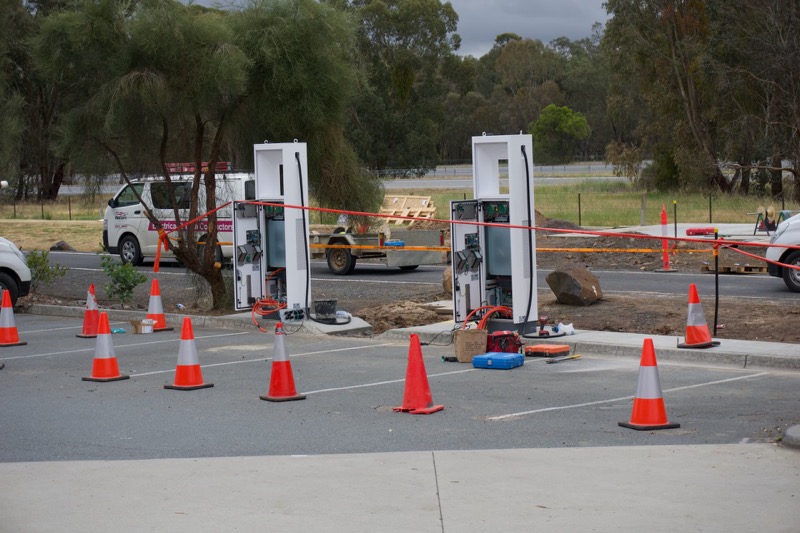
↑ These head units are wired to the rectifiers via DC cabling.
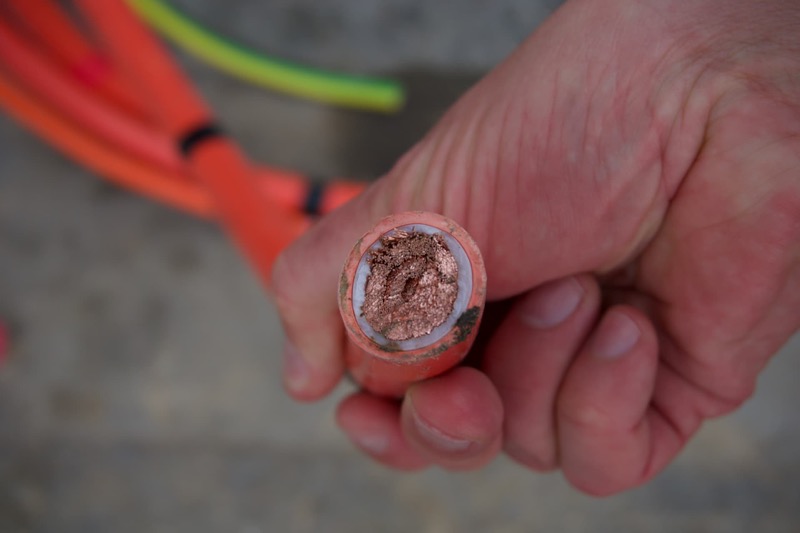
↑ Chunky DC cabling. A copper thief's delight.
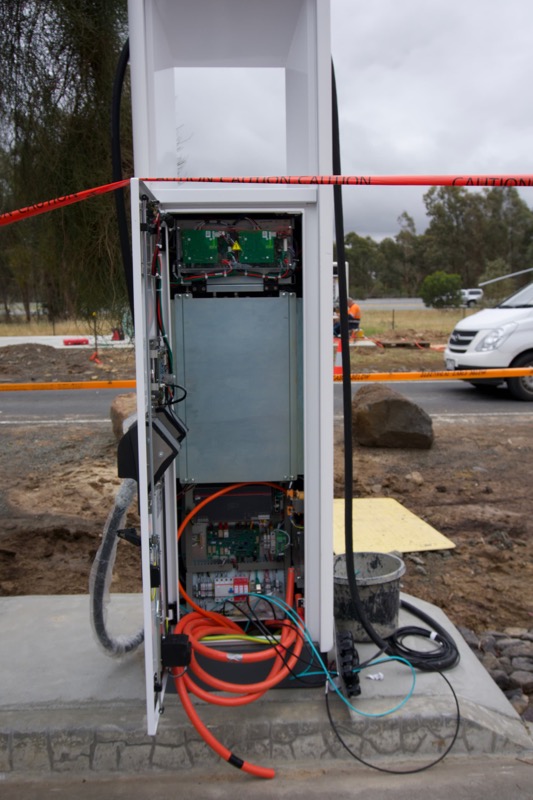
↑ A closer look inside the charger head.
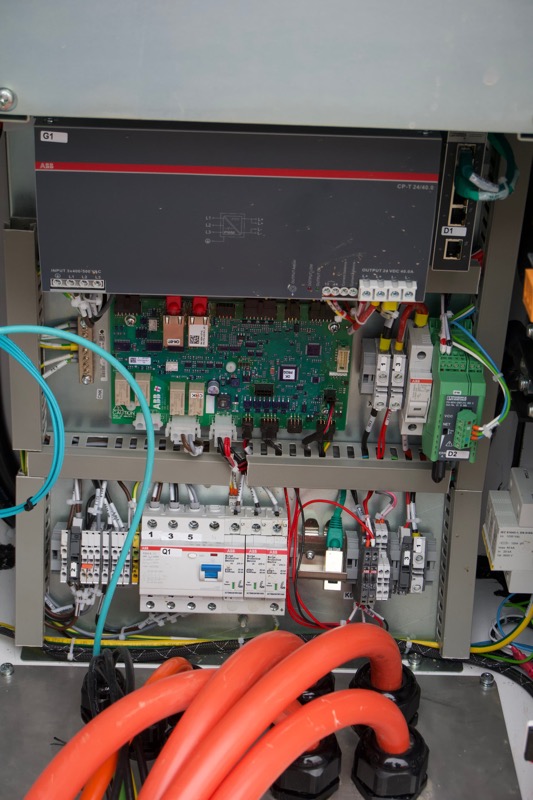
↑ An even closer look!

↑ The finished site before the wraps and branding were put on. That big box behind the chargers and to the left of the switchboard is a battery!
The Euroa site is just one portion of a $15m project to build 21 similar sites across the country. $6m from ARENA and the rest from Chargefox's investors. This particular site received $500,000 of funding from the state government too. I don't know the exact cost for the Euroa site, but 21 sites divided by $15m is an average of $715,000 per site.
The Chargefox sites are what I'd call deluxe sites. The fastest chargers on the market, often backed by batteries or grid upgrades, with a decent amount of civil works. If all they were installing was one or two 50-60kw chargers, the price would be significantly less.
Chargefox has published multiple documents (a condition of their ARENA funding) on the project that are invaluable for anyone wanting to operate any type of EV charging network.
This is a video from UK (pretty similar to Australia in terms of power setup), but the playlist goes into great detail about installing a 22kw EV charger in a public car park and well worth a watch:
Here's just a quick list of information I've found useful over the years for building up my knowledge of the EV industry worldwide and locally.
PlugShare is the de-facto database of charger locations in Australia. I dislike the fact that they require an expensive licence to commercially use the data that they got for free from the community (Open Charge Map is properly free!), but it is what it is.
ARENA's Knowledge Bank has loads of info about previous EV charging projects they've funded. A requirement of their funding is that the recipients of their money have to produce a "lessons learnt" document during and after the project. Read them all.
World Electric Vehicle Journal and Energy Policy are constantly publishing useful research papers on all aspects of electric vehicles, including charging. They get a bit dense, but the knowledge is invaluable, particularly if you need evidence to back up or rule out your assumptions.
Not a huge fan of The Driven, but it is the main blog for EV news in Australia, I dare say the only one really doing a proper job of covering the EV beat locally. Quality is low, but they cover almost everything you need to know.
I mentioned this earlier, but Schneider's Electrical Installation Guide is well worth a read so when you're talking with electricians you don't sound like an idiot. They'll appreciate that you understand basic terminology and electrical products.
The Electric Vehicle Council's reports and in particular the annual "State of Electric Vehicles" are great summaries of where the industry is at locally.
